LSU Student Colloquium Past Events
Student Colloquium Menu
For more information e-mail: mfarr17@lsu.edu.
October 2, 2024: Ian Tobasco
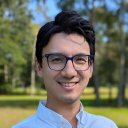
Ian is an Associate Professor of Mathematics at Rutgers University. His research interests include Calculus of Variations, Partial Differential Equations, Elasticity Theory, Mechanical Metamaterials, Fluid Dynamics, Spin Glasses. The talk he is giving for the SCC is accessible to all STEM majors!
Undergraduate Talk ( Lockett 237; Wednesday, October 2, 3:30- 4:30 PM)
Title: Rigidity and Elasticity
Abstract: This talk will introduce elasticity theory from the geometric point of view for students from mathematics and related disciplines. Our basic objects of study will be (nearly) length preserving maps that arise from (nearly) minimizing an energy functional having to do with the amount of work required to deform a body. After defining the basic quantities of interest, we will discuss Fritz John's seminal study of small strain maps, along with his counterexample to rigidity and its ultimate resolution in the early 2000s by Friesecke, James, and Müller. Time permitting, we will discuss a bit about elastic patterns --- fine structures that occur in naturally wrinkled or crumpled sheets that show us what we do not yet understand about the rigidity of thin elastic domains.
Fall 2022
October 31-November 1, 2022: Henry (Hal) Schenck
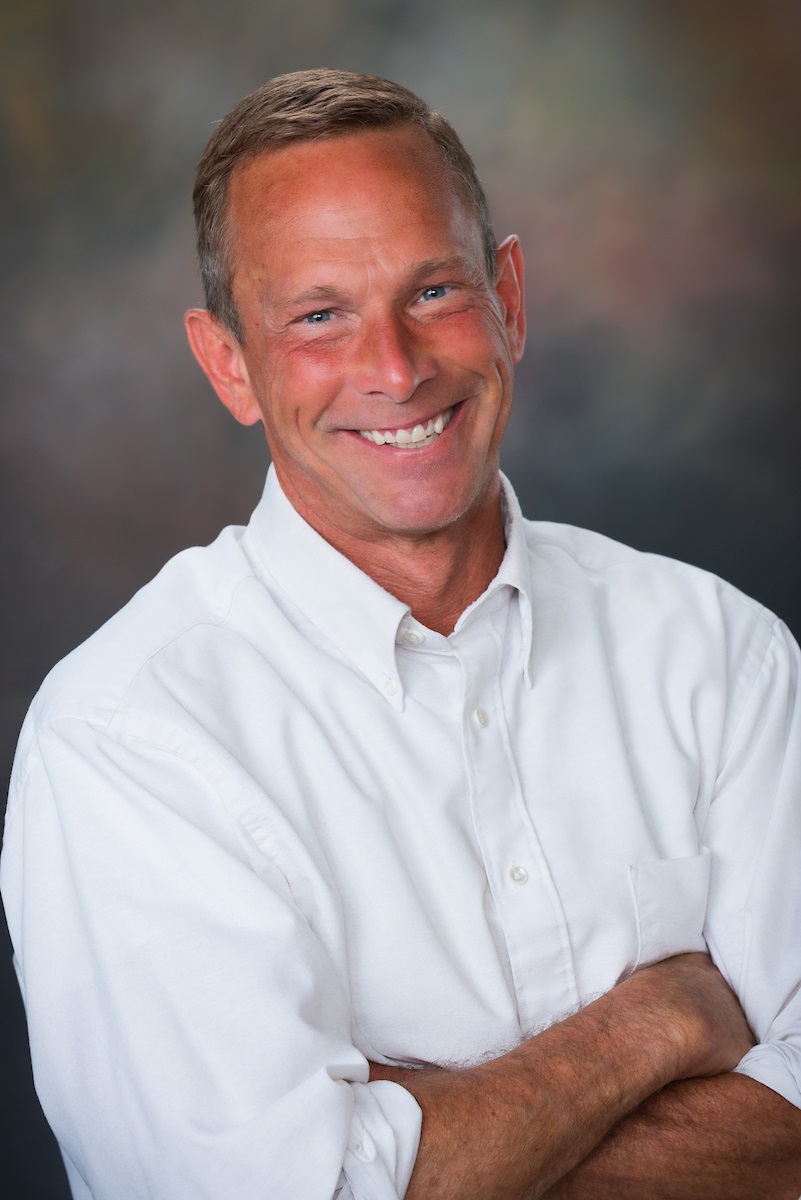
Hal is a Professor and Rosemary Kopel Brown Eminent Scholars Chair in the Mathematics Department at Auburn University. His research interests are interdisciplinary: his background is in commutative algebra and algebraic geometry. He is especially interested in problems which can be studied from a computational standpoint, and in interactions with problems in applied mathematics.
Undergraduate Talk ( Lockett 232; Monday, October 31, 3:30- 4:30 PM)
Title: Combinatorics and Commutative Algebra
Abstract: This talk will give an overview of the spectacular success of algebraic methods in studying problems in discrete geometry and combinatorics. First we'll discuss the face vector (number of vertices, edges, etc.) of a convex polytope and recall Euler's famous formula for polytopes of dimension 3. Then we'll discuss graded rings, focusing on polynomial rings and quotients. Associated to a simplicial polytope P (every face is "like" a triangle) is a graded ring called the Stanley-Reisner ring, which "remembers" everything about P, and gives a beautiful algebra/combinatorics dictionary. I will sketch Stanley's solution to a famous conjecture using this machinery, and also touch on connections between P and objects from algebraic geometry (toric varieties). No prior knowledge of any of the terms above will be assumed or needed for the talk.
Graduate Talk ( Lockett 276 ; Tuesday, November 1, 3:30-4:30 PM)
Title: Numerical Analysis meets Topology
Abstract: One of the fundamental tools in numerical analysis and PDE is the finite element method (FEM). A main ingredient in FEM are splines: piecewise polynomial functions on a mesh. Even for a fixed mesh in the plane, there are many open questions about splines: for a triangular mesh $T$ and smoothness order one, the dimension of the vector space $C^1_3(T)$ of splines of polynomial degree at most three is unknown. In 1973, Gil Strang conjectured a. formula for the dimension of the space $C^1_2(T)$ in terms of the combinatorics and geometry of the mesh $T$, and in 1987 Lou Billera used algebraic topology to prove the conjecture (and win the Fulkerson prize). I'll describe recent progress on the study of spline spaces, including a quick and self contained introduction to some basic but quite useful tools from topology, as well as interesting open problems.
November 18-19, 2019: Steven Leth
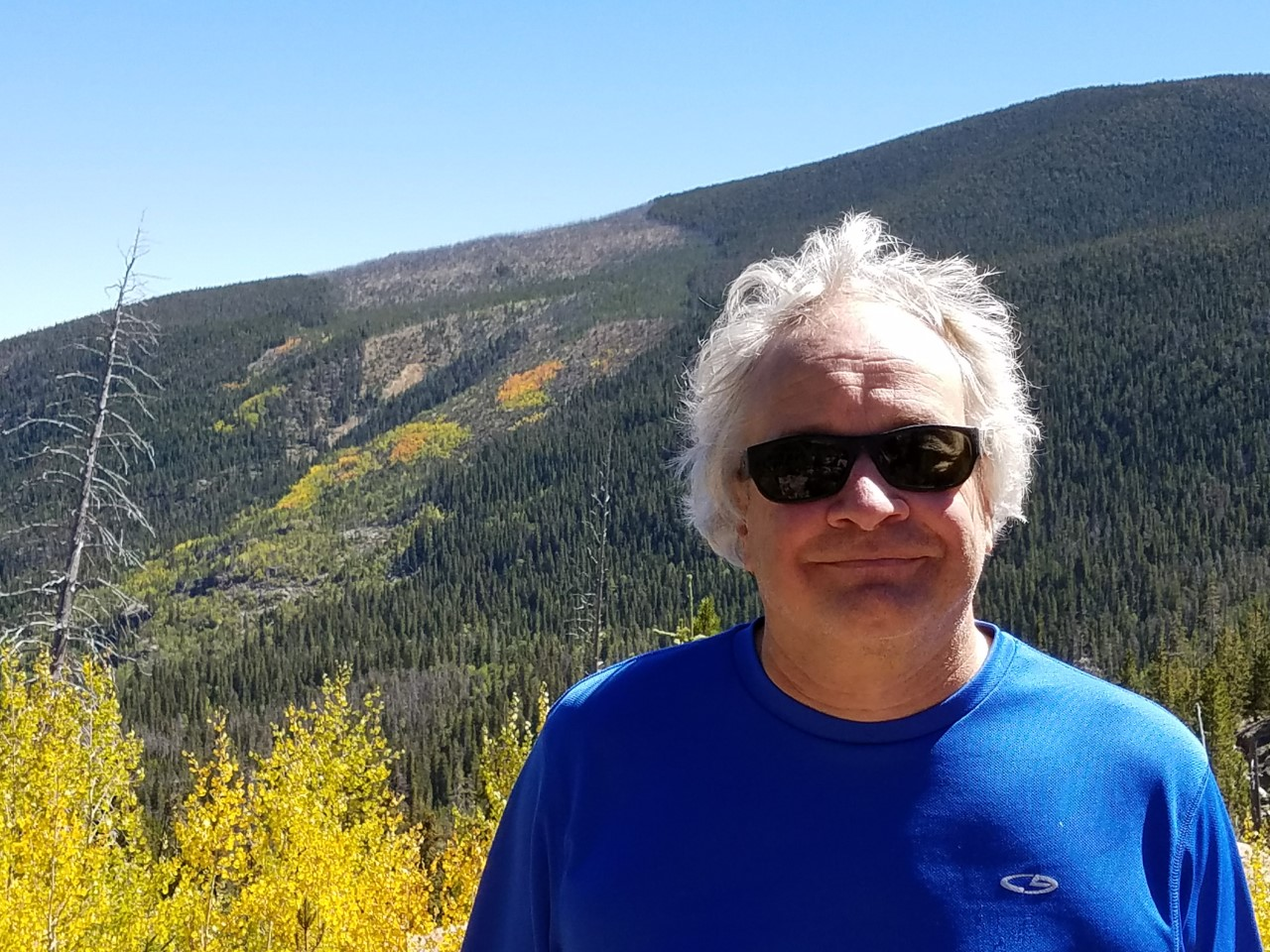
Steve’s research is mostly focused on applications of nonstandard methods to combinatorial number theory, an area that has been especially active in the last few years. Steve also has a long-standing interest in the teaching of mathematics at all grade levels, and is active in developing curriculum materials for pre-service teachers, as well as working with in-service teachers in a variety of professional development settings. Since receiving his doctoral degree from the University of Colorado in 1985, Steve spent three years as a “Van Vleck Assistant Professor” at the University of Wisconsin and is now in his 32nd year at the University of Northern Colorado.
Undergraduate Talk ( Lockett 241; Monday, November 18, 1:30- 2:20 PM)
Title: Fixed Points of Continuous Functions in the plane
Abstract: If we crumple up a map of Colorado, then place that crumpled map on top of an identical map, some point on the top map is directly over the same location on the lower map. This might not be true if we use a map of Louisiana or Michigan, which have “disconnected” portions. Also, we must be careful to not tear the map while we are crumpling it. This is an example of a consequence of the famous Brouwer Fixed Point Theorem. We will examine this beautiful mathematical result, and demonstrate how it follows from a simple combinatorial theorem about coloring vertices of triangles. The extent to which the Fixed Point Theorem can be generalized is still unsolved, and we will briefly discuss that as well.
Graduate Talk ( Lockett 285 ; Tuesday, November 19, 1:30-2:20 PM)
Title: An introduction to the use of nonstandard methods
Abstract: Nonstandard methods utilize the technique of viewing relatively simple structures that we wish to study inside much richer structures with idealized properties. Most famously, we might look at nonstandard models of the real numbers that contain actual “infinitesimal” elements. The existence of the idealized structures gives us access to powerful tools that can often support more intuitive proofs than standard methods allow. We will look at examples of simple nonstandard arguments in several different settings, as well as a few recent results obtained using these methods.
October 31 - November 1, 2019: Keith Conrad
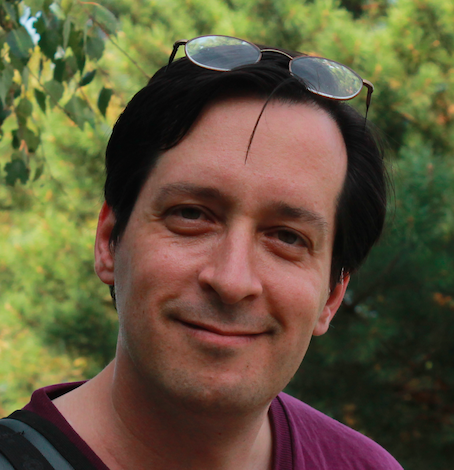
Keith Conrad received his PhD at Harvard, and after postdoc positions at Ohio State, MSRI, and UC San Diego he moved to UConn. His research interests are in number theory, which he first learned about in high school as a student at the Ross program, and since then he has given talks on the subject to students at summer programs in the USA, China, and Russia.
Graduate Talk ( Coates 109; Thursday, October 31, 1:30- 2:30 PM)
Title: Heuristics for Statistics in Number Theory
Abstract: Last month the sum of three cubes was in the news: mathematicians discovered with a computer how to write 42 as a sum of three cubes and then how to write 3 as a sum of three cubes in a new way; it's in fact expected that both 42 and 3 are a sum of three cubes in infinitely many ways. There are many other patterns in number theory that are expected to occur infinitely often: infinitely many twin primes, infinitely many primes of the form $x^2 + 1$, and so on. The basis for these beliefs is a heuristic way of applying probabilistic ideas to number theory, even though there is nothing probabilistic about perfect cubes or prime numbers. The goal of this talk is to show how such heuristics work and, time permitting, to see a situation where such heuristics break down.
Undergraduate Talk ( Allen 123 ; Friday, November 1, 9:30-10:20 AM)
Title: Applications of Divergence of the Harmonic Series
Abstract: The harmonic series is the sum of all reciprocals 1 + 1/2 + 1/3 + 1/4 + ..., and a famous counterintuitive result in calculus is that the harmonic series diverges even though its general term tends to 0. This role for the harmonic series is often the only way students see the harmonic series appear in math classes. However, the divergence of the harmonic series turns out to have applications to topics in math besides calculus and to events in your daily experience. By the end of this talk you will see several reasons that the divergence of the harmonic series should be intuitively reasonable.
April 12-22, 2019: Peter Jorgensen
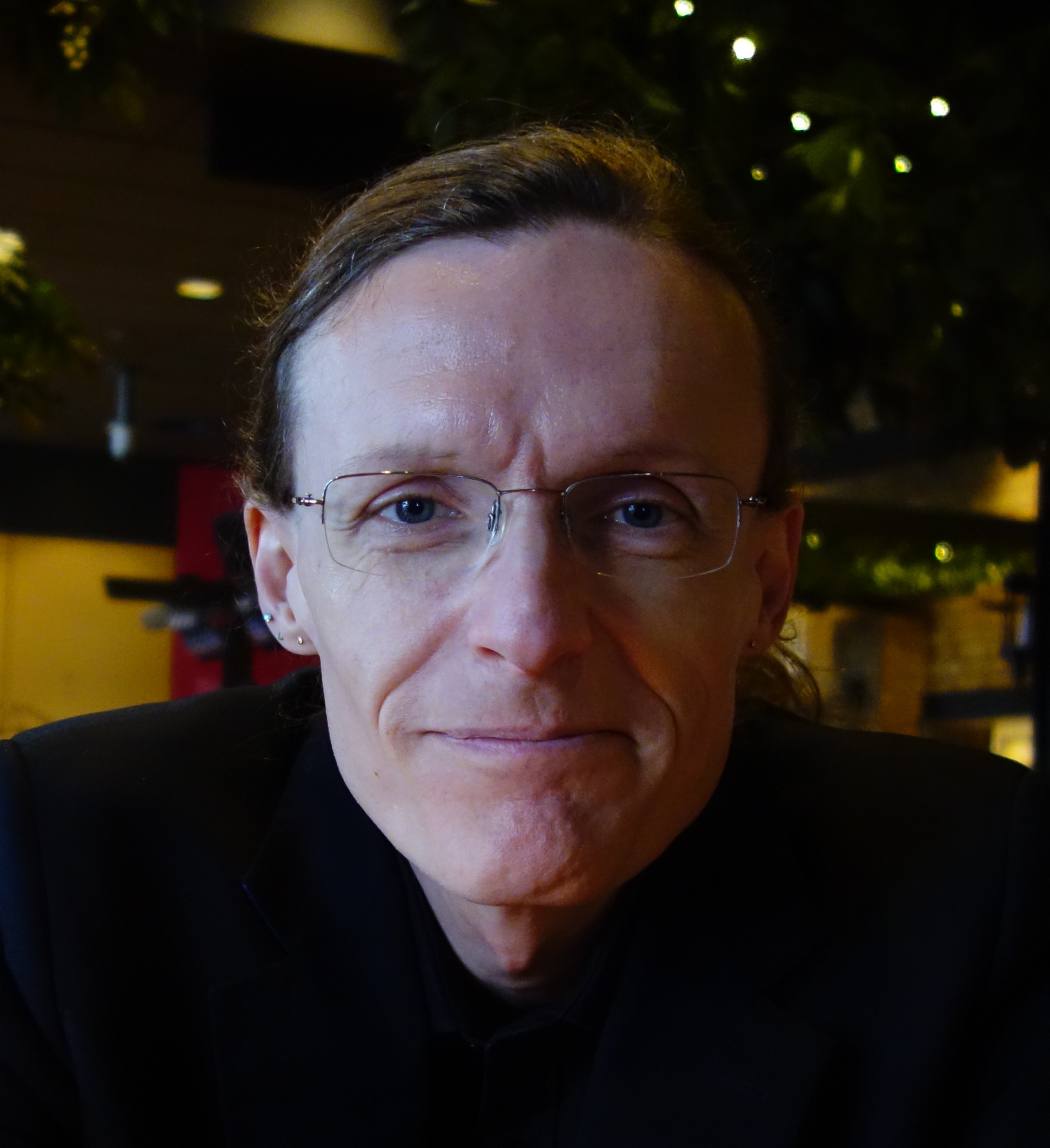
Professor Peter Jorgensen obtained his PhD from the University of Copenhagen in 1997. He held post doc positions in Antwerp, Bielefeld, and Copenhagen before moving to the University of Leeds in 2003 as a University Research Fellow. He has been Professor of Mathematics at Newcastle University since 2006. He is the author of more than 70 research papers and serves as a main editor of the Bulletin of the London Mathematical Society.
Undergraduate Talk ( Lockett 113 ; Friday, April 12, 10:30-11:20 AM)
Title: Knots
Abstract: Knots are everyday objects, but they are also studied in mathematics. They were originally envisaged as models for atoms by Lord Kelvin, and have been studied by increasingly sophisticated mathematical methods for more than 100 years.
Two knots are considered to be "the same" if one can be manipulated to give the other without breaking the string. The natural question of whether two given knots are the same turns out to be highly non-trivial; indeed, this is the central question of Knot Theory.
The talk is a walk through some aspects of this fascinating area of pure mathematics.
Graduate Talk ( Lockett 277; Monday, April 22, 3:30- 4:20 PM)
Title: Quiver representations and homological algebra
Abstract: The word "quiver" means oriented graph: A graph where each edge has an orientation, i.e. is an arrow from one vertex to another. A representation of a quiver Q associates a vector space to each vertex of Q and a linear map to each arrow of Q. The representations of Q form a so-called abelian category. It is also possible to construct triangulated categories of quiver representations, and abelian and triangulated categories are the basic objects of homological algebra.
The talk will consider a simple example and present a number of fundamental properties of abelian and triangulated categories of quiver representations.
April 3-5, 2019: Gilles Francfort
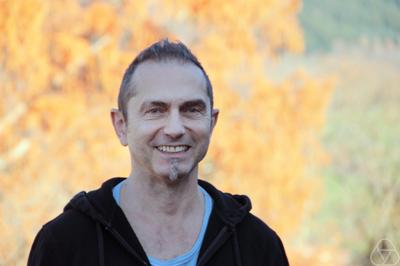
Dr. Francfort is a Professor of Mathematics at the Université Paris XIII and a visiting professor at the Courant Institute at New York University. He received his PhD in Mechanical Engineering at Stanford University and his habilitation at Université Paris 6. Dr. Francfort was a senior member of the Institut Universitaire de France in Paris, and a co-recipient of the Paul-Doistau-Emile Blutet prize from the French Academy of Sciences. He has traveled prolifically and has had many talks and invited stays at institutions throughout the world.
Undergraduate Talk ( Lockett 9; Wednesday, April 3, 3:30-4:20 PM)
Title: Spring Brake
Abstract: I wish to demonstrate that minimization is a natural notion when dealing with even simple mechanical systems. The talk will revolve mainly around a simple spring brake combination which will in turn illustrate how the search for minimizers tells us things are never as simple as first thought. All that will be needed for a correct understanding of the material are basic notions of convexity, continuity as well as some familiarity with integration by parts.
Graduate Talk ( Lockett 9; Friday, April 5, 3:30- 4:20 PM)
Title: The mysterious role of stability in defective solids
Abstract: Adjudicating the correct model for the behavior of solids in the presence of defects is not straightforward. In this, solid mechanics lags way behind its more popular and attractive sibling, fluid mechanics. I propose to describe the ambiguity created by the onset and growth of material defects in solids. Then, I will put forth a notion of structural stability that helps in securing meaningful evolutions. I will illustrate how such a notion leads us from the good to the bad, and then to the ugly when going from plasticity to fracture, and then damage. The only conclusion to be drawn is that much of the mystery remains.
November 13-14, 2018: Joseph Bonin
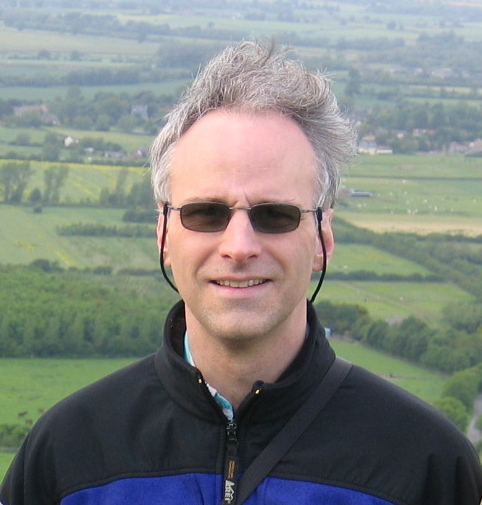
Dr. Bonin has research interests in Matroid Theory, which is a branch of Combinatorics. He is a professor at The George Washington University, where he has been since receiving his PhD from Dartmouth College in 1989. He is a member of the GW Academy of Distinguished Teachers, and has been a research visitor at many universities, including MIT and Universitat Politecnica de Catalunya.
Undergraduate Talk ( Lockett 114; Tuesday, November 13, 3:30-4:20 PM)
Title: What do lattice paths have to do with matrices, and what is beyond both?
Abstract: A lattice path is a sequence of east and north steps, each of unit length, that describes a walk in the plane between points with integer coordinates. While such walks are geometric objects, there is a subtler geometry that we can associate with certain sets of lattice paths. Considering such sets of lattice paths will lead us to examine set systems and transversals, their matrix representations, and geometric configurations in which we put points freely in the faces of a simplex (e.g., a triangle or a tetrahedron). Matroid theory treats these and other abstract geometric configurations. We will use concrete examples from lattice paths to explore some basic ideas in matroid theory and some of the many intriguing problems in this field.
Graduate Talk ( Lockett 235; Wednesday, November 14, 1:30- 2:20 PM)
Title: Old and New Connections Between Matroids and Codes: A Short Introduction to Two Field
Abstract: The theory of error-correcting codes addresses the practical problem of enabling accurate transmission of information through potentially noisy channels. The wealth of applications includes getting information to and from space probes, reliably accessing information from (perhaps scratched or dirty) compact discs, and storage in the cloud. There are many equivalent definitions of a matroid, each conveying a different perspective. Matroids generalize the ideas of linear independence, subspaces, and dimension in linear algebra, and cycles and bonds in graph theory, and much, much more. The wealth of perspectives reflects how basic and pervasive matroids are. Matroids arise naturally in many applications, including in coding theory. The aim of this talk is to give a glimpse of both of these fields, with an emphasis on several ways in which matroid theory sheds light on coding theory. One of these applications of matroid theory dates back to the 1970’s; another is a relatively new development that is motivated by applications, such as the cloud, that require locally-repairable codes.
October 15-17, 2018: Joshua Sabloff
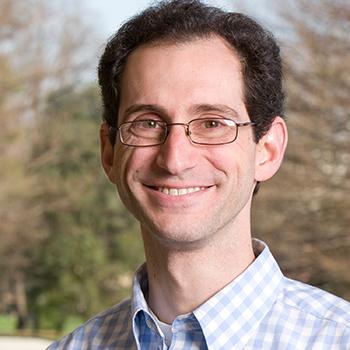
Dr. Sabloff has research interests in Contact and Symplectic Geometry, especially Legendrian and Transversal Knot Theory. He received his PhD from Stanford University. After he spent a year as a postdoctoral lecturer at the University of Pennsylvania, he moved to Haverford. He is now an Associate Professor at Haverford College in Pennsylvania.
Undergraduate Talk ( 239 Lockett; Monday, October 15, 3:30-4:20 PM)
Title: How to Tie Your Unicycle in Knots: An Introduction to Legendrian Knot Theory
Abstract: You can describe the configuration of a unicycle on a sidewalk using three coordinates: two position coordinates x and y for where the wheel comes into contact with the ground and one angle coordinate t that describes the angle that the direction the wheel makes with the x axis. How are the instantaneous motions of the unicycle constrained (hint: do you want your tire to scrape sideways)? How can we describe that constraint using generalizations of tools from vector calculus?
The system of constraints at every point in (x,y,t)-space is an example of a "contact structure," and a path that obeys the constraints is a "Legendrian curve." If the curve returns to its starting point, then it is called a "Legendrian knot." A central question in the theory of Legendrian knots is: how can you tell two Legendrian knots apart? How many are there? In other words, how many ways are there to parallel park your unicycle?
There will NOT be a practical demonstration.
Graduate Talk ( 239 Lockett; Tuesday, October 16, 3:30- 4:20 PM)
Title: Non-Orientable Lagrangian Fillings of Legendrian Knots
Abstract: Lagrangian fillings of Legendrian knots are interesting objects that are related, on one hand, to the 4-genus of the underlying smooth knot and, on the other hand, to Floer-type invariants of Legendrian knots. Most work on Lagrangian fillings to date has concentrated on orientable fillings. I will present some first steps in constructions of and obstructions to the existence of (decomposable exact) non-orientable Lagrangian fillings. In addition, I will discuss links between the 4-dimensional crosscap number of a knot and the non-orientable Lagrangian fillings of its Legendrian representatives. This is joint work with Linyi Chen, Grant Crider-Philips, Braeden Reinoso, and Natalie Yao.
April 16-20, 2018: Ken Goodearl
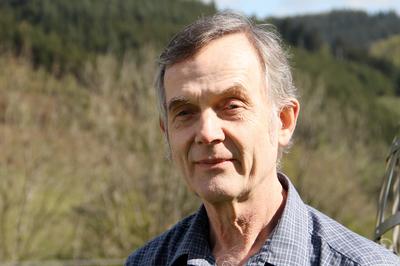
Dr. Goodearl has research interests in various areas such as noncommutative algebras, quantum groups, and $C^{*}$-algebras. He received from the University of Washington. He has held positions across the US and in Europe, including research positions at the Universitat Passau in Germany and at MSRI in Berkely, CA. He has written several books and over a hundred journal articles. He is currently a professor at UC Santa Barbara.
Undergraduate Talk (239 Lockett; Monday, April 16, 3:30-4:20 PM)
Title: How fast does a group or an algebra grow?
Abstract: An algebraic object "grows" from a set $X$ of generators as larger and larger combinations of those generators are taken. In the case of a group $G$, this means taking longer and longer products of generators and their inverses. For an algebra $A$ (a ring containing a field), it means taking linear combinations of longer and longer products of the generators. The growth rate of $G$ is the rate at which the number of elements that can be obtained as products of at most $n$ generators and their inverses grows with increasing $n$. The growth rate of $A$ amounts to counting dimensions of subspaces spanned by products of at most $n$ generators. These rates of growth provide important measures for the "complexities" of $G$ and $A$, respectively. They may be given by a polynomial function or an exponential function, but there are quite a few surprises -- rates like a polynomial with degree $\sqrt 5$ can occur, or rates in between polynomial and exponential functions, whereas some other potential rates are ruled out. We will discuss the basic ideas of growth for groups and algebras; the distillation of growth rate into a "dimension" for algebras; and the values that this dimension can take.
Graduate Talk (239 Lockett; Wednesday, April 18, 3:30- 4:20 PM)
Title: From dimension to Grothendieck groups and monoids
Abstract: In trying to generalize the concept of "dimension'' from finite dimensional vector spaces to structural size measures for other classes of mathematical objects, one quickly arrives at the idea that such "sizes'' should be elements of some abelian group, so that (at the very least) sizes can be added. The natural group to use in linear algebra is $\bf Z$, but in general there is no obvious group at hand. Grothendieck pointed out how to construct an appropriate group as one satisfying a certain universal property. Typically, one wants to not only add but compare "sizes'', in the sense of inequalities. To accommodate comparisons, a combined structure is needed -- an abelian group which is equipped with a (compatible) partial order relation. On the other hand, demanding subtraction for "sizes'' is sometimes asking too much, and "sizes'' should take values in a monoid rather than a group.
We will introduce the above concepts and constructions in the context of modules over a ring, and we will discuss various examples.
March 19-21, 2018: Renling Jin
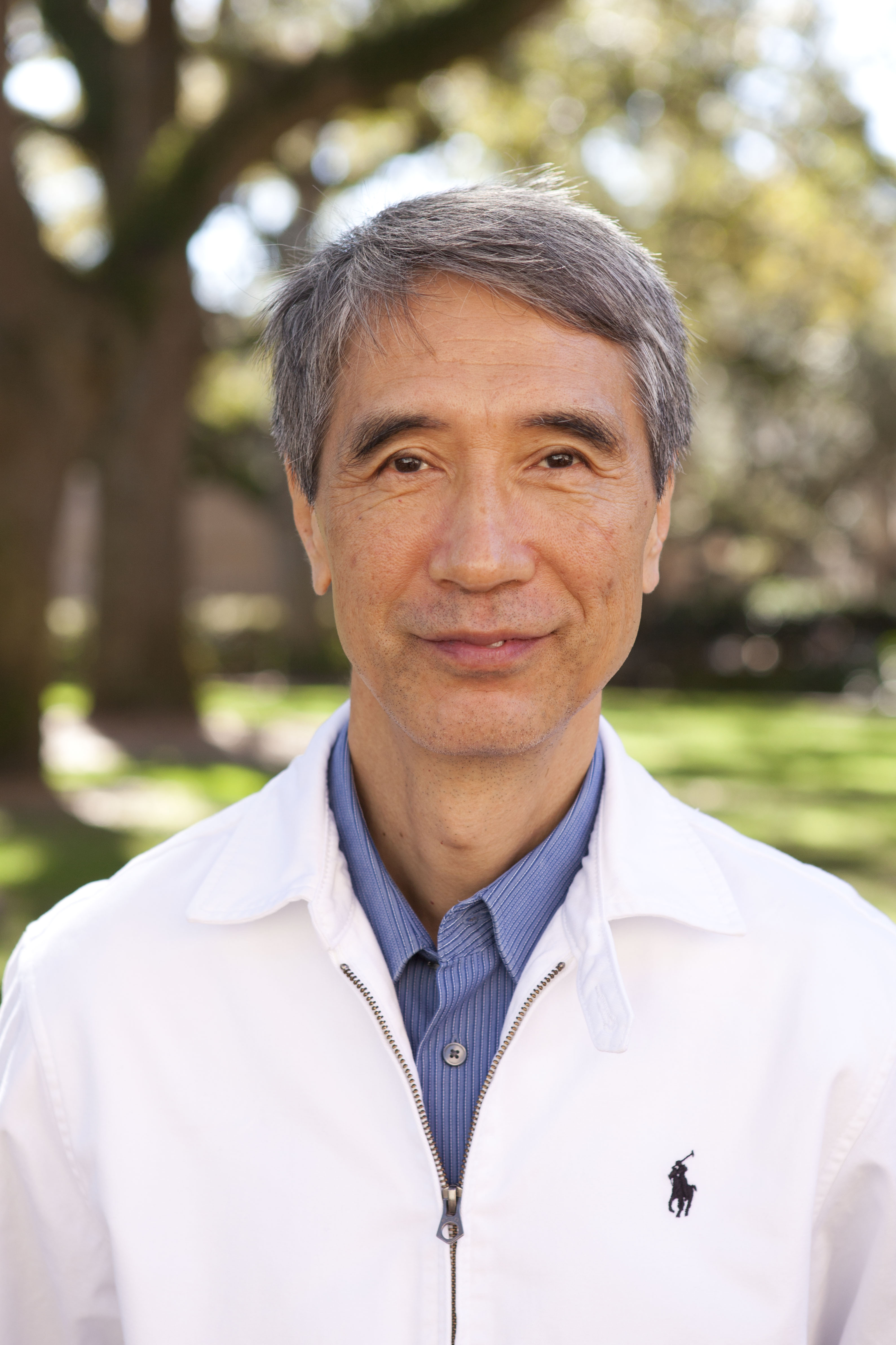
Dr. Jin has many research interests including nonstandard analysis, set theory, model theory. After receiving his doctorate in Mathematical Logic from the University of Wisconsin - Madison, he was Charles B. Morrey Jr. Assistant Professor at UC Berkeley and then a National Science Foundation postdoctoral fellow. Dr. Jin has been the editor of the journal Logic & Analysis since 2007. He is currently a professor at the College of Charleston.
Graduate Talk (285 Lockett; Monday, March 19, 1:30-2:30PM)
Title: Can nonstandard analysis produce new standard theorems?
Abstract: The answer is yes. Nonstandard analysis which was created by A. Robinson in 1963 incorporates infinitely large numbers and infinitesimally small positive numbers consistently in our real number system. But the strength of nonstandard analysis in the research of standard mathematics has not seemed to be sufficiently appreciated by mathematical community. In the talk, we will introduce two parts of the work done by the speaker and his collaborators on the standard combinatorial number theory using nonstandard analysis. In each of these two parts new standard theorems that were proved by nonstandard methods will be presented.
Undergraduate Talk (277 Lockett; Wednesday, March 21, 10:30-11:30AM)
Title: A taste of logic--from the reasoning of a thief to a painless proof of the incompleteness theorem of Gödel
Abstract: We will present some fun part of mathematical logic including a puzzle, a true paradox, and a fake paradox. The discussion will lead to Gödel’s Incompleteness Theorem. Gödel’s Incompleteness Theorem is well-known but difficult to proof. We will present a heuristic proof of the theorem which should be sufficient to understand the idea of the rigorous proof of the theorem.
November 6-8, 2017: Peter Nelson
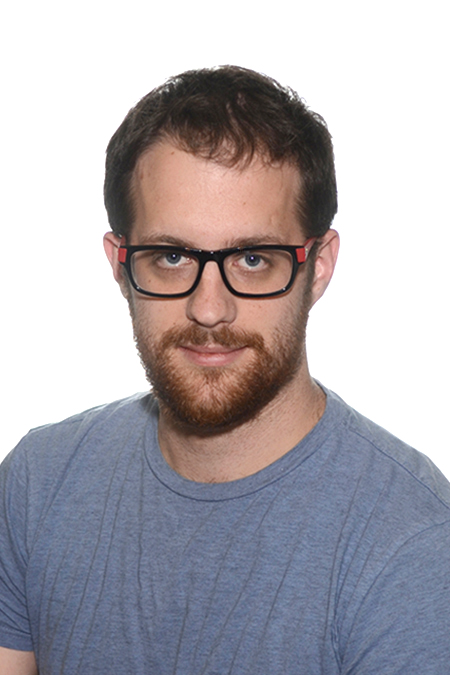
Dr. Nelson is a professor at the University of Waterloo in Ontario, Canada. He received his Ph.D. in Combinatorics and Optimization at the University of Waterloo. He was a Postdoctoral Fellow at the Victoria University of Wellington in New Zealand. His research interests include structural and extremal graph theory, and their links with coding theory and extremal combinatorics. Much of Dr. Nelson’s work settles old conjectures in matroid theory.
Squaring the Square
Abstract: Is it possible to decompose a square into smaller squares of different sizes? The solution to this problem, which has surprising links to graph theory, linear algebra and even physics, was discovered by four undergraduate students at Cambridge University in the 1930's. I will tell the interesting mathematical story that led to this discovery.
How to Draw a Graph
Abstract: Given a network of points and edges that can be drawn in the plane without crossing edges, what is the best way to actually draw it? Can such a network always be drawn with just straight lines? I will discuss and (mostly) prove a beautiful theorem of William Tutte that answers this question using intuitive ideas from physics.
April 3-5, 2017: Dmytro (Dima) Arinkin
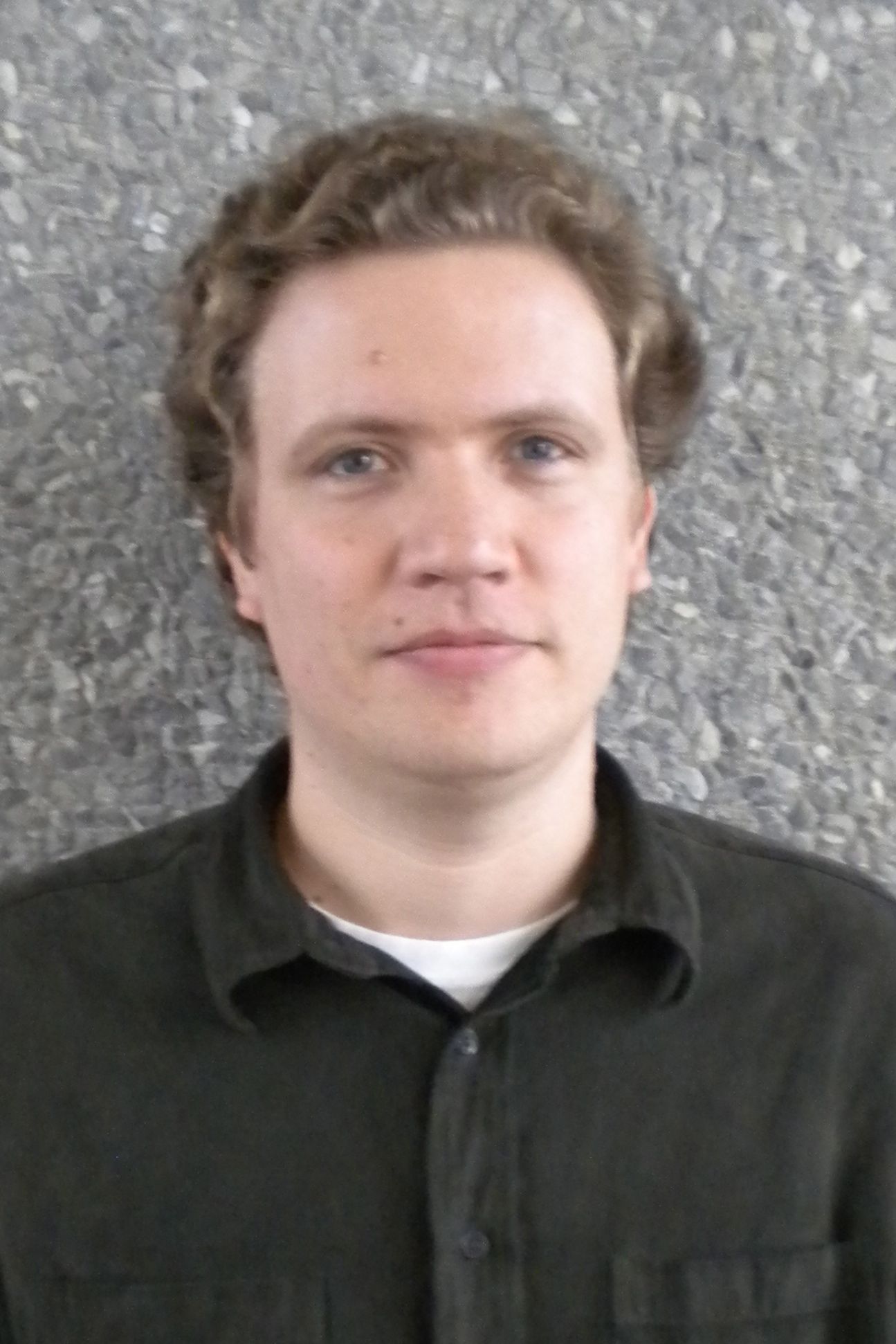
Dima Arinkin is a Professor at the University of Wisconsin, Madison. His work focuses on algebro-geometric questions motivated by the geometric Langlands program. He studies the moduli spaces of vector bundles (possibly with additional structures such as connections) on curves and the categories of sheaves on these spaces. Dima Arinkin has received numerous awards, including a Sloan Research Fellowship and a von Neumann Fellowship from the Institute for Advanced Study. He has a history of involvement with mathematics competitions, both in mentoring, and in winning a gold medal himself at the International Mathematics Olympiad.
What makes a space interesting? (Intro to moduli.)
Roughly speaking, geometry is the study of spaces. Here `space' is a placeholder: different flavors of geometry work with differentiable manifolds (differential geometry), topological spaces (topology), varieties (algebraic geometry, my favorite), and so on.
This leads to a question: should we try to study all spaces, or focus on those we consider `interesting'? And what makes a space interesting? One possible answer to this question is that there are interesting spaces called moduli spaces (the word `moduli' goes back to Hilbert and basically means `parameters'). The special feature is that these spaces parametrize objects of some class: e.g., moduli space of triangles parametrizes triangles, moduli space of differential equations parametrizes differential equations, and so on.
In my talk, I will go over the basics of moduli spaces; in the (unlikely) event that there is some time left, I will talk about the Murphy Law for the moduli spaces due to Ravi Vakil.
Connections with a small parameter.
In my talk, I will start with a classical, and relatively easy, statement about differential equations with a small parameter (due to Wasow) and use a geometric point of view to translate it, first, into a claim about connections on a vector bundle on a Riemann surface, and then into a statement about the geometry of the space of such connections (their `moduli space'). The main point of the talk is the interplay between study of `individuals' (differential equations or bundles with connections) and properties of their `community' (their moduli space).
March 7-9, 2017: Richard Hammack
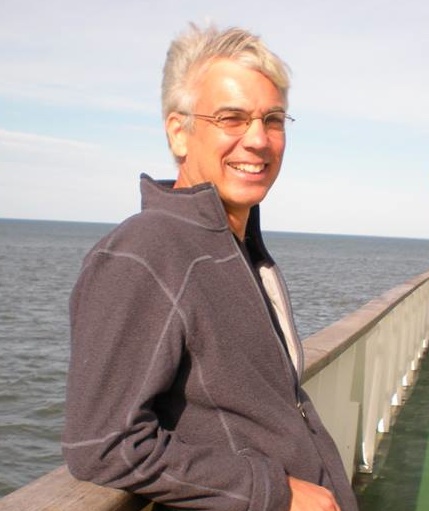
Richard Hammack is a professor of mathematics at Virginia Commonwealth University in Richmond. A native of rural southern Virginia, he studied painting at Rhode Island School of Design before an interest in computer graphics and visualization led him to a masters in computer science from Virginia Commonwealth University, and then to a Ph.D. in mathematics from UNC Chapel Hill. Before returning to VCU he taught at UNC, Wake Forest University and Randolph-Macon College. He works mostly in the areas of combinatorics and graph theory.
Integrate THIS: The mathematics of planimeters
A planimeter is a mechanical analog device that evaluates definite integrals. A typical planimeter features a dial and a stylus attached to an arm. As the stylus traverses the boundary of a region, the dial reads off the enclosed area. Planimeters have been mostly forgotten since the advent of computers, but at one time they were fairly commonplace.
I will explain the history and mathematics of planimeters, and I will demonstrate one that I made from two pieces of cast-off junk. It has only one moving part, but it can evaluate any definite integral that it can reach.
Not every graph has a robust cycle basis
The cycle space of a graph G is the vector space (over the 2-element field) whose vectors are the spanning eulerian subgraphs of G, and addition is symmetric difference on edges. As any eulerian subgraph is a sum of edge-disjoint cycles, the cycle space is spanned by the cycles in G, so one can always find a basis of cycles. Such a basis is called a cycle basis for G.
Because their vectors carry combinatorial information, cycle spaces have many applications, and different kinds of cycle bases cater to different kinds of problems. A lot of recent attention has focused on so-called robust cycle bases. Robust cycle bases are known to exist only for a few classes of graphs. Despite this, previously no graph was known to not have a robust cycle basis. We will see that the complete bipartite graphs K_{n,n} have no robust cycle basis when n ≥ 8. This leads to some tantalizingly open questions, particularly for the range 4 < n < 8, but also for general graphs.
November 1-9, 2016: Chelsea Walton
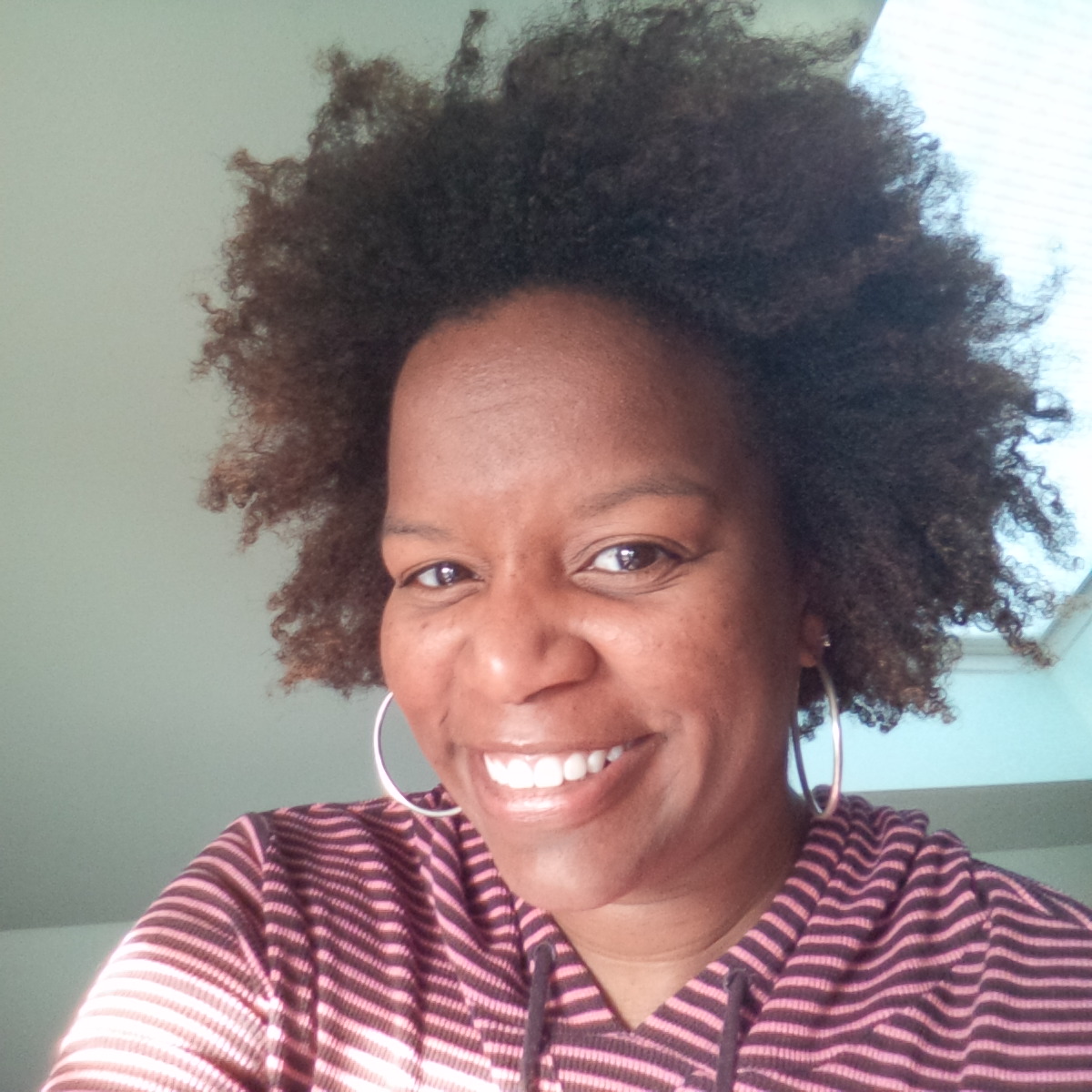
Dr. Walton is a professor at Temple University. She earned her Ph.D. from the University of Michigan, while also working as a visiting student at the University of Manchester. Dr. Walton held postdoc positions at the University of Washington, at the Mathematical Sciences Research Institute, and at MIT. During her time as a postdoc, one of Dr. Walton's focuses was on outreach programs. While at MIT, she taught for the Edge program, was the coordinator for PRIMES circle, and received the Infinite Kilometer Award for outreach. Her mathematical research interests are in noncommutative algebra and representation theory. Traveling has been a big part of Dr. Walton's career, and has sparked her interest in visiting locations all over the world, including Argentina, Morocco, Peru, and Poland.
Hamilton's Quaternions
Abstract: In this talk I will discuss the last great achievement of Sir William Rowan Hamilton- the discovery of the quaternion number system. This discovery was very controversial for its time and nearly drove Hamilton mad! The talk will be full of drama, intrigue, and wonderful mathematics. Some familiarity with complex numbers would help, but is not needed.
Quantum Symmetry
Abstract: Like Hopf algebras? You will after this talk! The aim of this lecture is to motivate and discuss "quantum symmetries" of quantum algebras (i.e. Hopf co/actions on noncommutative algebras). All basic terms will be defined, examples will be provided, along with a brief survey of recent results.
September 19-20, 2016: Kiran Kedlaya
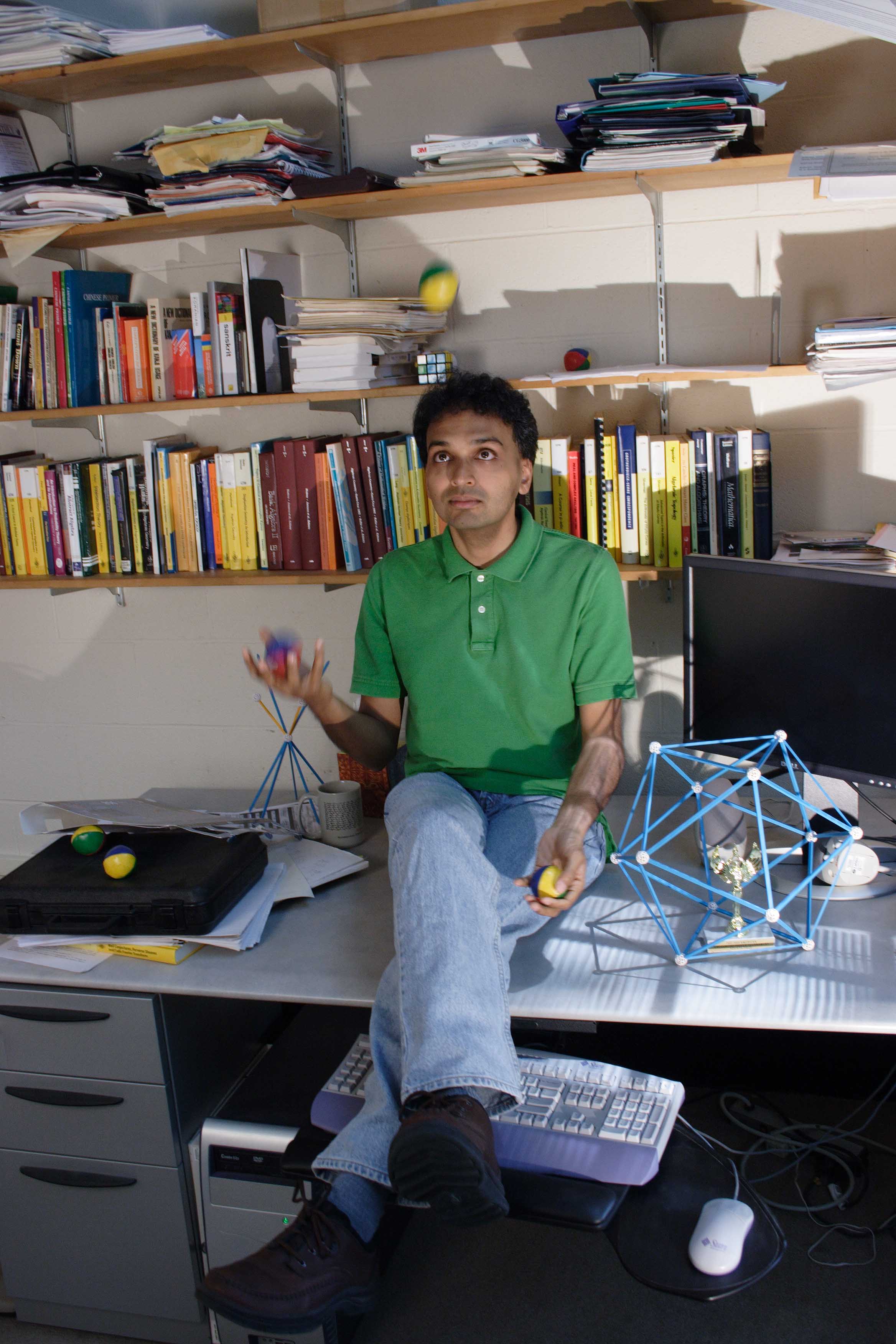
Dr. Kedlaya is a professor at UC San Diego. He received his Ph.D. in Mathematics from the Massachusetts Institute of Technology. He was awarded an NSF postdoctoral fellowship and held positions at the Mathematical Sciences Research Institute in Berkeley, at the University of California at Berkeley, and at the Institute for Advanced Study in Princeton. A partial list of the prestigious awards he has received include: the Stefan E. Warschawski Endowed Chair, a Alfred P. Sloan Fellowship, a Clay Liftoff Fellowship, a Presidential Early Career Award for Scientists and Engineers, and a Fellowship from the American Mathematical Society. His research interests include p-adic analytic methods, p-adic Hodge theory, algorithms, and applications in computer science. He is also interested in the education and promotion of mathematics. He has been on the USA Mathematical Olympiad committee, the board of directors for the Art of Problem Solving Foundation, and has authored a Putnam Exam problem book.
These talks have been made possible by the Student Government PSIF and by funding from the LSU Math Department.
The ABC Conjecture
Abstract: The ABC conjecture asserts that if A, B, C are three positive integers such that A + B = C, then these three integers cannot between them have "too many" repeated prime factors. The precise statement of the conjecture explains the difference between the fact that there are lots of such triples consisting of perfect squares (Pythagorean triples) but not consisting of higher perfect powers (Fermat's Last Theorem). I'll discuss the precise statement of the conjecture, some appealing consequences of this conjecture in various parts of number theory, and the status of a recent (2012) announcement of a proof.
Computational Number Theory Online: SMC and LMFDB
Abstract: This is more of a demonstration than a talk: I will indicate how to get started with two different but complementary online tools. SageMathCloud (SMC) is a cloud-based version of the Sage computer algebra system, which includes extensive number-theoretic functionality (and plenty of coverage in other areas of mathematics also). The L-Functions and Modular Forms Database (LMFDB) is a website that assembles various tables of number-theoretic objects, like elliptic curves and modular forms, in an easily browsable format that highlights the deep relationships among these objects.
April 6-8, 2016: Mark Reeder

Mark Reeder is a Professor of Mathematics at Boston College. He received his PhD in 1988 from Ohio State State University, and taught at the University of Oklahoma for nine years before moving to BC in 1997. He studies representation theory and number theory.
Understanding the Hypersphere
A Hypersphere is a sphere in four dimensions. It controls motion in our three dimensional world. Though we feel the effects of the hypersphere, our brains cannot easily visualize the whole of it. In this talk, Algebra, Geometry and Topology will unite to help us understand the Hypersphere.
From the Hypersphere to E8
This talk will be an introduction to compact groups G of continuous symmetries. We will see that Hyperspheres are the bricks in the construction of G, and also that G contains a "principal hypersphere" which knows way more than it should about the topology and group theory of G.
March 14-18, 2016: Tadele Mengesha

Tadele Mengesha is an Assistant Professor of Mathematics at the University of Tennessee Knoxville. He received his Ph.D. in 2007 from Temple University under the guidance of Yury Grabovsky. He has held postdoctoral positions at LSU under the mentorship of Robert Lipton as well as at Penn State under the mentorship of Qiang Du.
Dr. Mengesha works on the mathematical analysis of nonlocal models and partial differential equations. His recent focus is on the study of the peridynamic model, an integration-based model for the deformation of solids, that is found to be effective in capturing the emergence of singular phenomena such as fracture and cracks. His primary interest is developing the basic analytical underpinnings of peridynamics as well as other nonlocal models. That includes the study of associated function spaces, establishing relevant functional inequalities and implementation of standard variational and asymptotic techniques.
Integration by parts, local and nonlocal
In this talk, I will review the impact of integration by parts on our understanding of the "derivative" of rough functions. Once a property of smooth functions, integration by parts can be used as a defining character of regular functions as well as their derivative in the broader sense. As a consequence, a renewed notion of solution to ordinary and partial differential equations, especially those with irregular source term or irregular coefficients can be formulated. I will discuss some frequently used spaces of functions that can be described with the new notion of regularity. Extension of the definition and application of integration by parts to integral equations, also know as, nonlocal equation will be presented.
Averaged directional difference quotients
We study averaged directional difference quotients of vector fields and their continuity property over several function spaces. A third order tensor field will be used to distinguish appropriate directions in which slopes are averaged. The averaged directional derivatives will be shown to approximate classical notions of derivatives. We will use this approximation property to characterize vector fields in the space of Sobolev, bounded variation, and bounded deformation functions in a unified way.
February 29, 2016: Sara Billey

Prof. Sara Billey is a world-renowned researcher in algebraic combinatorics. After receiving her PhD from University of California, San Diego under Mark Haiman and Adriano Garsia, she went on to do a postdoc under Nolan Wallach and Richard Stanley. She is now a professor of mathematics at the University of Washington. Prof. Billey has co-chaired several international workshops, including FPSAC 2010 and ones at ICERM and Banff. She is the recipient of many outstanding awards, including being the only academic mathematician in 2000 to receive the Presidential Early Career Award for Scientists and Engineers, which she received in the White House after an invitation from President Bill Clinton himself. Prof. Billey also co-authored the book "Singular Loci of Schubert Varieties" with Lakshmibai, which remains one of the best resources in the area. When she is not doing mathematics, Prof. Billey enjoys playing a variety of sports, as well as playing bridge, flute, and riding her unicycle.Trees, Tanglegrams, and Tangled Chains
Tanglegrams are a special class of graphs appearing in applications concerning cospeciation and coevolution in biology and computer science. They are formed by identifying the leaves of two rooted binary trees. We give an explicit formula to count the number of distinct binary rooted tanglegrams with n matched vertices, along with a simple asymptotic formula and an algorithm for choosing a tanglegram uniformly at random. The enumeration formula is then extended to count the number of tangled chains of binary trees of any length. This includes a new formula for the number of binary trees with n leaves. We also give a conjecture for the expected number of cherries in a large randomly chosen binary tree and an extension of this conjecture to other types of trees. This talk is based on recent joint work with Matjaz Konvalinka and Frederick (Erick) Matsen IV posted at https://arxiv.org/abs/1507.04976 .
Enumeration of Parabolic Double Cosets for Coxeter Groups
Parabolic subgroups $W_I$ of Coxeter systems $(W,S)$ and their ordinary and double cosets $W / W_I$ and $W_I \backslash W /W_J$ appear in many contexts in combinatorics and Lie theory, including the geometry and topology of generalized flag varieties and the symmetry groups of regular polytopes. The set of ordinary cosets $w W_I$, for $I \subseteq S$, forms the Coxeter complex of $W$, and is well-studied. In this talk, we look at a less studied object: the set of all parabolic double cosets $W_I w W_J$ for $I, J \subseteq S$.
Each double coset can be presented by many different triples $(I,w,J)$. We describe what we call the lex-minimal presentation and prove that there exists a unique such choice for each double coset. Lex-minimal presentations can be enumerated via a finite automaton depending on the Coxeter graph for $(W,S)$.
In particular, we present a formula for the number of parabolic double cosets with a fixed minimal element when $W$ is the symmetric group $S_n$. In that case, parabolic subgroups are also known as Young subgroups. Our formula is almost always linear time computable in $n$, and the formula can be generalized to any Coxeter group.
This talk is based on joint work with Matjaz Konvalinka, T. Kyle Petersen, William Slofstra and Bridget Tenner.
January 25-29, 2016: Tom Braden

Tom Braden received his PhD from Massachusetts Institute of Technology in 1995. He held postdoctoral appointments at the Institute for Advanced Study and Harvard University before moving to the University of Massachusetts, Amherst in 2001, where he is now a full professor. Dr. Braden has also held visiting positions at the Hebrew University, Reed College, and Stony Brook University. He is an expert in the topology of singular algebraic varieties, particularly as they are applied to representation theory and combinatorics. In his spare time he enjoys studying and playing gamelan music of central Java.
Geometry of Machines
One interesting kind of space whose geometry we can study is a configuration space: a space whose points represent possible states in a mechanism or other physical system. Navigating along a path inside the space is then represented by motions of the machine. Some quite complicated and high dimensional spaces which cannot be visualized directly can be explored very concretely in this way.
I will focus mainly on configuration spaces of planar bar-and-joint machines, which are two-dimensional machines made from rigid bars, hinges, and anchors. Amazingly, a theorem of Kapovich and Milson says roughly that any manifold can appear as (part of) the configuration space of such a machine.
Deformations in Topology and Algebra
The idea of deformation appears all over mathematics. In its most basic form, one takes an object and fits it into a family of related objects parametrized by some auxiliary variables. When the family varies nicely enough, the entire family can have nicer properties than the original object did.
This talk will present a few interesting settings from topology and algebra in which this idea works nicely. In the realm of topology, the equivariant cohomology ring of a space with a torus action is a deformation of the ordinary cohomology ring. In algebra, one can view polynomial differential operators as a deformation of ordinary polynomial functions, and a useful way to study certain representations of Lie algebras is by deforming the action of a Cartan subalgebra. These ideas will be presented via concrete examples and a minimum of technical machinery.
November 18-19, 2015: Mark Goresky

Mark Goresky received his Ph.D. from Brown University in 1976. He spent two years as a C.L.E. Moore Instructor at MIT, followed by three years as Assistant Professor at the University of British Columbia. He moved to Northeastern University in 1980 where he eventually became a full professor with a joint appointment in the Department of Mathematics and in the College of Computer Science. He has been a "long term member" at the Institute for Advanced Study in Princeton since 1994.
Professor Goresky is best known for his joint work with Robert MacPherson, including their discovery of intersection cohomology and their development of stratified Morse theory. His recent work involves automorphic forms and Langlands' program. He also maintains an interest in electrical engineering and computer science. He recently published a book "Algebraic Shift Register Sequences" (Cambridge University Press) together with Andrew Klapper, who is currently at the University of Kentucky.
Professor Goresky has received a number of academic honors and awards. He has served on a wide range of national and international scientific panels and on the Editorial boards of a number of top journals. In his spare time he flies radio controlled electric powered model airplanes and helicopters.
A glamorous Hollywood star, a renegade composer, and the mathematical development of spread spectrum communications
During World War II Hedy Lamarr, a striking Hollywood actress, together with George Antheil, a radical composer, invented and patented a secret signaling system for the remote control of torpedoes. The ideas in this patent have since developed into one of the ingredients in modern digital wireless communications. The unlikely biography of these two characters, along with some of the more modern developments in wireless communications will be described.
Modular forms and beyond
Several examples of the spectacular coincidences in number theory that can be "explained" using elliptic curves and modular forms will be described.
A plan to find (and prove) higher dimensional generalizations of these phenomena was mapped out 40 years ago by Robert Langlands. Since then, Langlands "program" has occupied the attentions of hundreds of talented mathematicians in what surely must be one of the grandest mathematical gestures in history. Today, much of Langlands' plan is nearing completion, but many mysteries still remain. Some of the ingredients in this vast circle of ideas will be described.
November 2-3, 2015: Clayton Shonkwiler

Clayton Shonkwiler is an Assistant Professor of Mathematics at Colorado State University. He participated in the 2002 REU at LSU as an undergraduate and received his Ph.D. in 2009 from the University of Pennsylvania under Dennis DeTurck and Herman Gluck. He was a visiting researcher at the Isaac Newton Institute and the recipient of the University of Georgia's 2014 Postdoctoral Research Award before coming to Colorado State. Dr. Shonkwiler is an expert in the study of random knots and more generally of random walks subject to topological constraints, which are used to model biologically significant ring and network polymers, and his research synthesizes differential and symplectic geometry with topology, probability, and computation. He also enjoys creating mathematical art.
15 Views of the Hypersphere
The usual sphere in 3-dimensional space---meaning a hollow sphere, like a basketball--- is such a simple and familiar object that we don't really need to think about how to visualize it. The corresponding shape in 4-dimensional space, called the hypersphere, is a very natural mathematical object which is also important in general relativity and other areas of physics. Of course, it's a bit harder to visualize without 4-dimensional eyes, but I'll present 15 ways of thinking about the hypersphere which will hopefully make it a little more familiar and understandable. There will be lots of pictures and animations.
A Geometric Perspective on Random Walks with Topological Constraints
A random walk in 3-space is a classical object in geometric probability, given by choosing a direction at random, taking a step, and repeating n times. Random walks with topological constraints are collections of random walks which are required to realize the edges of some predetermined multigraph. The simplest nontrivial example is a random polygon, which is just a random walk which is required to form a closed loop.
Since random walks are used to model polymers, random walks with topological constraints give models for polymer conformations with nontrivial topologies. Examples range in complexity from plasmids and viral DNA, which form simple closed loops, to rubbers and gels, which form large networks. Consequently, there is keen interest both in analyzing the geometric probability theory of such walks and in developing fast simulation algorithms.
In this talk I will describe some of the most exciting recent developments in the mathematics of random walks with topological constraints, focusing on the case of random polygons. These developments arise from a purely geometric understanding of the space of possible polygon configurations. Despite being based on rather deep theorems from symplectic/algebraic geometry, this geometric perspective is surprisingly elementary and has already yielded both exact theoretical statements and powerful new algorithms. This includes joint work with Jason Cantarella (University of Georgia) and Tetsuo Deguchi and Erica Uehara (Ochanomizu University, Tokyo).
April 1-2, 2015: Congming Li
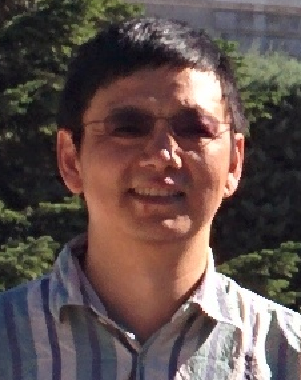
Congming Li is Professor of Applied Mathematics at University of Colorado, Boulder. He obtained his PhD under Louis Nirenberg at the Courant Institute in 1989. He has made important contributions to problems arising in Nonlinear Partial Differential Equations, Calculus of variations, Geometric Analysis and Dynamics of Fluids.
The maximum principle-from simple calculus to frontier research
In this talk, we present the following topics:
- the calculus of the local maxima
- the maximum principle for partial differential equations
- the method of moving planes.
We hope to help our students learn the frontier research on the method of moving planes from the very simple characteristics of local maxima: f'(x_0) = 0 and f''(x_0) <= 0.
In this talk, I will give a brief introduction on the method of moving planes, show some interesting applications of this method, and present some key points in making new advancements.
March 25-27, 2015: Peter Kuchment
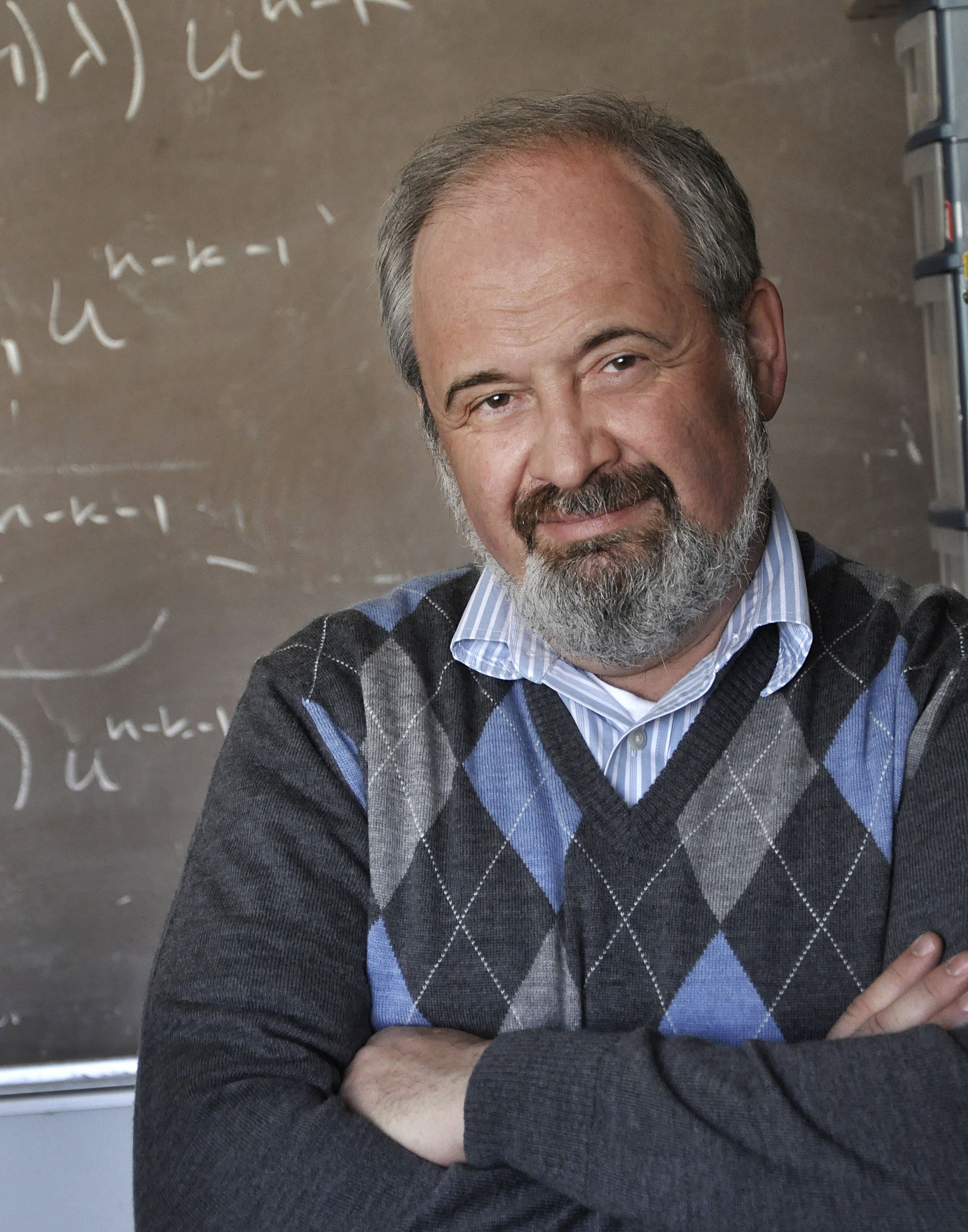
Peter Kuchment is a distinguished professor at Texas A&M, and one of the leading mathematicians working in PDE and mathematical physics. He received his Ph.D. in Mathematics at Kharkov State University, USSR in 1973 and Science Doctor in Mathematics at Academy of Sciences, Kiev, USSR in 1983. Professor Kuchment became Fellow of the American Mathematical Society in 2012, and was the featured speaker at CBMS-NSF conference "Mathematical techniques of medical imaging," University of Texas, Arlington, May 2012. He is also the author and coauthor of many books such as “Floquet Theory for Partial Differential Equations”, and “Introduction to Quantum Graphs”.
Tomography: mathematics of seeing invisible
Everyone has heard of CT, MRI, and Ultrasound medical scanners. Not many, though, know that mathematics plays a major role in obtaining the corresponding images. I will introduce basics of the mathematics of tomographic imaging. No prior knowledge of the subject is assumed.
The nodal count mystery
The beautiful nodal patterns of oscillating membranes, usually called by the (incorrect) name Chladny patterns, have been known for several centuries (Galileo, Leonardo, Hooke) and studied in the last hundred years by many leading mathematicians. In spite of that, many properties of these patterns remain a mystery. We will present the history and a recent advance in the area of counting the nodal domains. No prior knowledge of the subject is assumed.
March 16-17, 2015: Aaron Lauda
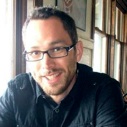
Aaron Lauda is one of the leading mathematicians working in representation theory. He has made major contributions to the subject of categorifications of quantum groups and their representations, and to the study of higher categories. The Khovanov-Lauda-Rouquier algebras are among the most fundamental families of algebras studied nowadays. Prof. Lauda graduated from the University of Cambridge in 2006 under Martin Hyland and took a Ritt Assistant Professorship in Columbia where he won a Sloan Research Fellowship. He joined USC in 2011 as an Assistant Professor where he won an NSF CAREER award in 2012 and was promoted to a full professor in 2013. He co-authored the e-book "Higher-dimensional categories: an illustrated guidebook," which provides an excellent treatment of the techniques used in the field.
Diagrammatic algebra
In this talk we will introduce a calculus of planar diagrams that can be used to represent algebraic structures in a wide variety of contexts. We will start by introducing a diagrammatic framework for studying linear algebra. In this framework, familiar notions such as trace and dimension take on a diagrammatic meaning. We will see how the notion of duality transforms algebraic notions into intuitive manipulations of diagrams. Finally, we will see how this diagrammatic reformulation of linear algebra can be used to study invariants of tangled pieces of string (knot theory).
From ladder diagrams to knot theory
The star of this talk will be an algebraic object called a quantum group. This is an algebraic object closely connected to Lie theory. We will review some basic facts about the representation theory of quantum groups before turning our attention to representations one can construct on certain planar diagrams called 'ladder diagrams'. Our aim is to provide a hands-on introduction to representation theory by exploring how quantum groups impose structure on these ladder diagrams. Though this example may seem somewhat trivial, we will show that viewing ladder diagrams as representations of quantum groups allows us to construct diagrammatically defined knot invariants in an elementary way.
Our aim is to demonstrate that using only the definition of the quantum group and one additional ingredient, one can produce a wealth of diagrammatically defined knot invariants including the Jones polynomial. We do not assume any previous background in topology or Lie theory.
March 10-12, 2015: Ben Webster
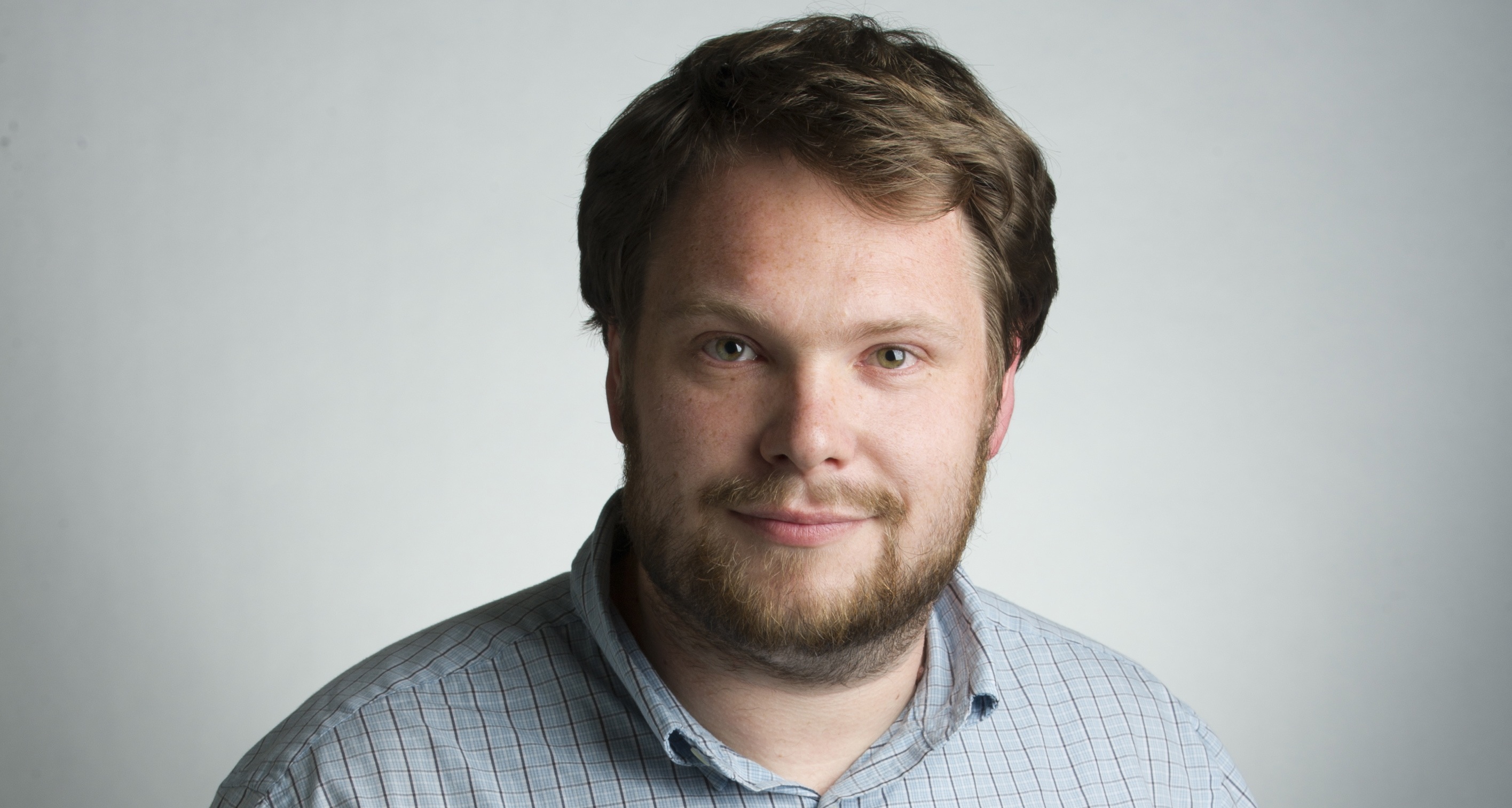
Ben Webster is an Assistant Professor in Mathematics at the University of Virginia. His areas of expertise include geometric representation theory, diagrammatic algebra and low-dimensional topology. He received his BA in 2002 from Simon's Rock College after attending Budapest Semesters in Mathematics and an REU at LSU in 2001. He received his Ph.D. in 2007 and went on postdoctoral positions at the Institute for Advanced Study and MIT as well as tenure track positions at the University of Oregon and Northeastern University before coming to Virginia in 2013. He's been the recipient of an NSF CAREER award and an Alfred P. Sloan fellowship, as well as spending Spring 2014 as a Junior Chair at the Université Denis Diderot (Paris 7).
Untying knots: topology, DNA and coloring
I'm sure you've all seen a very tangled rubber band in your life. You know logically that it must be possible to untangle the band without breaking it but this can be hard to put this knowledge into practice. In fact, if your obnoxious roommate had cut the rubber band, tangled its ends together, and then carefully glued the ends together (isn't he always doing stuff like that?), how would you know? Of course, you'd know you hadn't untangled it yet, but you can try every possible way.
Luckily, mathematicians have your back. They've worried precisely this for a century (they can't trust their roommates either, apparently). Bacteria have worried about it a lot longer (with isomerase playing the role of the prankster roommate). I'll give a basic introduction to the theory of knots and their use in mathematics and biology. In particular, I'll show you how to wise up to your roommate's tricks (though it may take a while).
I'll give an expository talk about the representation theory of symmetric groups over the rational numbers or finite field. While this is a very classical subject, it's one which is very rich, and where there is still a lot to say. I'll emphasize the connection to the emerging field of categorification, and explain in what sense a Lie algebra acts on the category of representations of S_n (for all n).
February 9-10, 2015: Lihe Wang
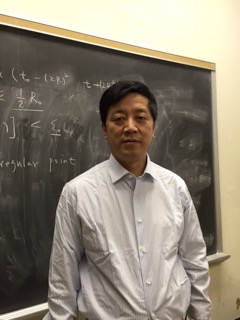
Lihe Wang is Professor of Mathematics at the University of Iowa. He obtained his PhD under Luis Caffarelli at the Courant Institute of Mathematics in 1989. After spending several years at Princeton University and UCLA, he took up his current position at the Univ of Iowa. He was awarded a Sloan fellowship in 1994. Some of his areas of expertise include Fully Nonlinear equations, Homogenization, Geometric Analysis, Parabolic PDE's and Fluid Mechanics.
Mathematics: its origin, meaning, and applications
What is behind the common feature of modern sciences? What is the driving force behind the modern productivity? What are the methods to discover information within random numbers?
In this talk, we will try to present the miracle power of calculus with algebra and geometry and make clear the ubiquitous presence of mathematics throughout the discovery of calculus, linear algebra and differential equations.
We will talk about a unified approach to the regularity theory of elliptic and parabolic equations. The introduction of Sobolev spaces, the meaning of embedding theorems, and the geometric and probabilistic meaning of some of the regularity and singularity theory will be discussed.
February 1-4, 2015: Thomas Lam
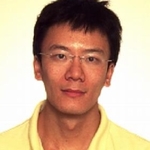
Thomas Lam is Professor of Mathematics at the University of Michigan and a leading researcher in combinatorics and its relations to representation theory and geometry. Thomas Lam attained his PhD from MIT under Richard Stanley in 2005. He took the position of Benjamin Peirce Assistant Professor at Harvard where Lam was awarded a Sloan Fellowship in 2009. In 2014, he was an invited speaker for the highly prestigious Current Developments in Mathematics lecture series.
Enumeration of Young tableaux
Young tableaux are natural combinatorial objects that appear in combinatorics, representation theory, and algebraic geometry. I will talk about some old and some newer questions related to counting Young tableaux. These questions are closely related to some natural problems such as: how long is the longest increasing subsequence in a sequence of n random numbers?
I will talk about electrical networks consisting only of resistors. These electrical networks satisfy certain "relations"; for example, two resistors in series (or two in parallel) can be replaced by a single resistor with a particular resistance. I will discuss an approach to studying electrical networks using generators and relations, where methods from (Lie) group theory might be applied.
March 25-27, 2014: Arkady Berenstein
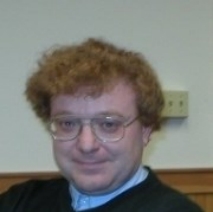
Cluster recursions
In my lecture I will discuss a class of rational recursions that, rather surprisingly, turn out to be integer sequences. For example, the rational recursion x_{k+1}=(x_k^2+1)/x_{k-1} with x_1=x_2=1 gives x_3=2, x_4=5, x_5=13, x_6=34, ... (this is a half of the Fibonacci sequence). The ultimate reason for the integrality is that each x_n is a Laurent polynomial over integers in x_1 and x_2. For instance, x_5=x_1/x_2^2 + 2/x_1 + 2/(x_1^2 x_2^2) + x_2^4/x_1^3 + 3 x_2^2/x_1^3 + 3 x_2^4/x_1^3 + 1/(x_1^3 x_2^2) which gives x_5=13 when x_1=x_2=1. This is an example of what cluster recursions are: rational recursions of order n with the property that each member of the sequence is a Laurent polynomial in x_1,...x_n with integer coefficients.
I will provide more examples of "one-dimensional" cluster recursions such as x_{k+1}=(x_k^b+1)/x_{k-1}, where b is a positive integer, x_{k+1}x_{k-3}=x_k x_{k-2}+x_{k-1}^2 (Somos-4 sequence), some "two-dimensional" recursions like: x_{i,j+1}x_{i,j-1} = x_{i+1,j}x_{i-1,j} + x_{ij}^2 (Q-system of type A) and many others.
The explanation of the integrality of these sequences and of the underlying Laurent Phenomenon is in the theory of cluster algebras introduced by S. Fomin and A. Zelevinsky in 2001.
I will conclude the lecture with appropriate definitions of cluster mutations and will demonstrate how the above examples fit to the general cluster framework.
Quantum cluster algebras
Cluster algebras have been introduced by Fomin and Zelevinsky in 2001 as an algebraic framework for total positivity and canonical bases in representations of reductive groups. Now the theory of cluster algebras is connected to many different areas of mathematics, for example, representation theory of finite dimensional algebras, Poisson geometry and Teichmüller Theory.
The goal of my talk (based on joint work with A. Zelevinsky) is to present the theory of quantum deformations of cluster algebras. While a cluster algebra corresponds to an integer skew-symmetrizable matrix B, its quantum version corresponds to a compatible pair of B with a skew-symmetric matrix Lambda responsible for the q-commutation relations and is, in many respects, a more natural algebraic object.
It turns out that all "classical" cluster structures can be carried over (sometimes conjecturally) to the quantum world. For instance we conjectured 10 years ago that each quantum reductive or Kac-Moody group admits a quantum cluster structure. This has been recently confirmed by Kenneth Goodearl and Milen Yakimov.
Ultimately, I will explain how to fulfill one of the original goals of the cluster project: construction of the canonical triangular basis in acyclic case.
February 26-27, 2014: Satyan Devadoss
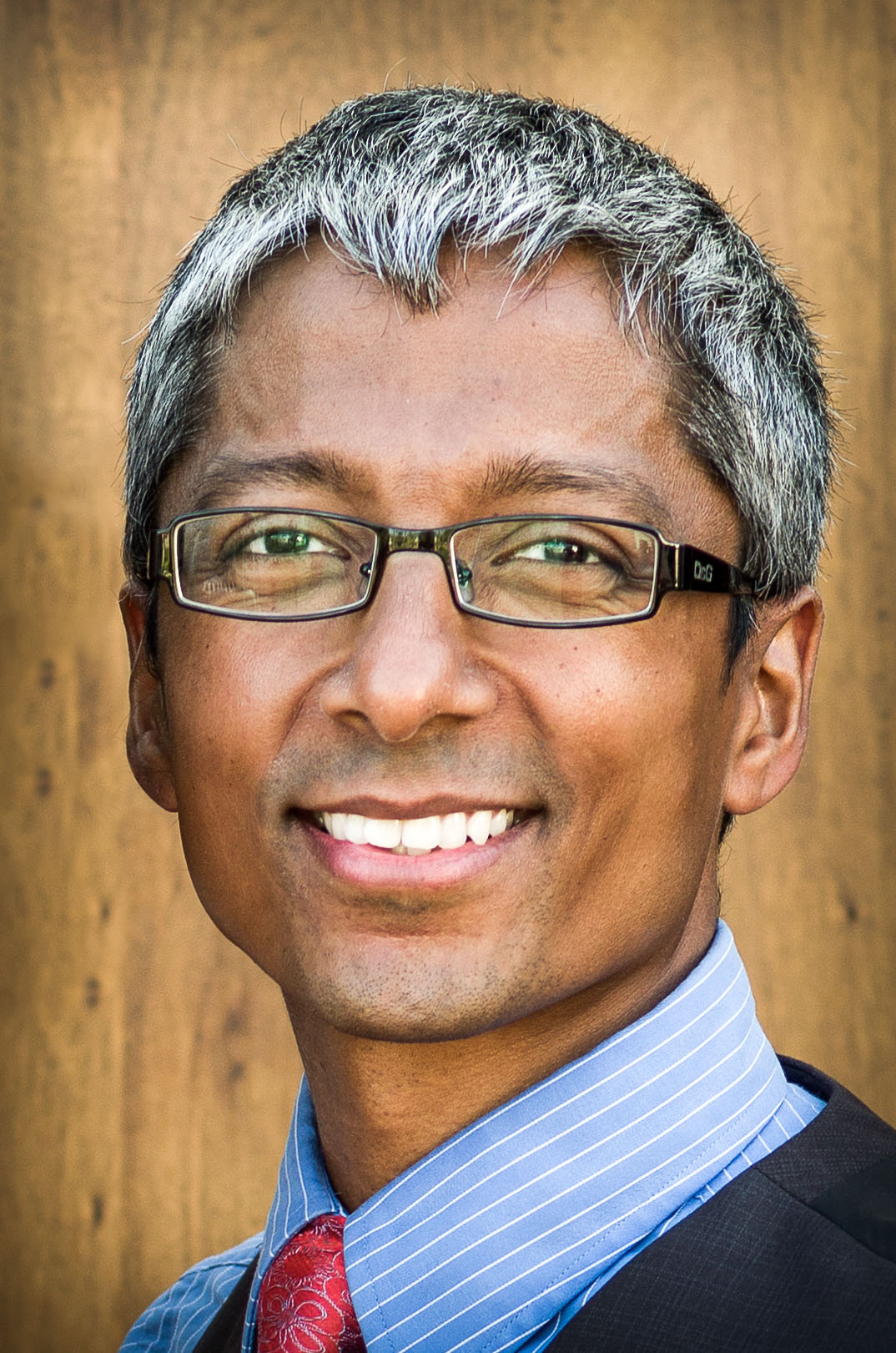
Satyan Devadoss is Professor of Mathematics at Williams College, and holds a Ph.D. in mathematics from The Johns Hopkins University. Before joining the faculty at Williams, he was an Arnold Ross assistant professor at The Ohio State University. He has earned accolades for both his research and teaching, including the Henry L. Alder National Teaching Award from the MAA, along with being an inaugural Fellow of the AMS.
Professor Devadoss has authored a textbook on computational geometry, created a DVD lecture series on the shape of nature, and written dozens of research articles on topics ranging from origami and cartography, to phylogenetics and particle collisions. In addition, he has attracted support from the National Science Foundation, the Mellon Foundation, and the Department of Defense, as well as holding visiting positions at The Ohio State University, the University of California, Berkeley, and the Mathematical Sciences Research Institute. He is currently a visiting scholar at the Stanford mathematics department.
Packings and Partitions
Motivated by Kepler’s study of cannonball packing, and Lord Kelvin’s study of ether and foam, the quest to understand the packing and partitioning of space have lead to some of the most remarkable ideas in mathematics. We look at these puzzles, in 2D, 3D, and beyond, and show their stunning appearance in nature, architecture, and current unsolved problems.
World of Particle Collisions
Configuration spaces are not only fundamental objects in mathematics, but appear in numerous areas such as robot motion planning, DNA sequencing, sensor networks, surface reconstruction, and origami designs. Our story is motivated by the shape of the configuration space of particles moving and colliding on a circle, which is far more complicated that it seems. These novel spaces now appear across a broad spectrum of research, including geometric group theory, combinatorics, phylogenetics, and statistics. The entire talk is heavily infused with visual imagery.
October 30 - Nov 1, 2013: Tadeusz Iwaniec
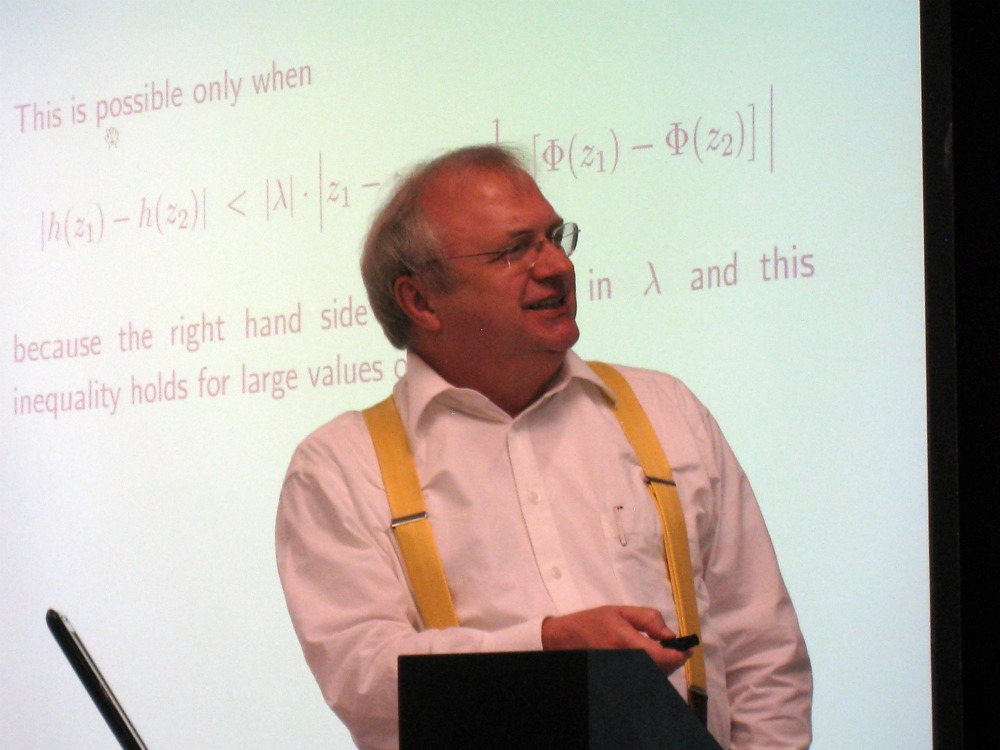
Harmonic Mappings
The historic Riemann Mapping Theorem asserts that two simply connected do-
mains X, Y \subsetneq \mathbb{C} are conformally equivalent. The doubly connected domains are next in the order of conformal complexity. Schottky’s Theorem (1877) tells us that a surjective conformal mapping h : A(r, R) → A(r_∗ , R_∗) between circular annuli exists if and only if
R_∗ / r_∗ = R / r.
Every surjective conformal map h = u + i v : X → Y is complex harmonic; that is, ∆u = ∆v = 0 . But not every complex harmonic homeomorphism is conformal. In the early 1960’s German-American mathematician Johannes C.C. Nitsche raised a question of existence of harmonic homeomorphisms between circular annuli. This fascinating and engaging problem is deeply rooted in the theory of minimal surfaces. Nitsche’s conjecture, which is now a theorem (L. Kovalev, J. Onninen, T.I., JAMS 2011), asserts that a harmonic homeomorphism exists iff R_∗ / r_∗ \geq (1/2) * (R/r + r/R). Analysis of harmonic homeomorphisms leads us to deformations of thin plates and films of smallest Dirichlet energy, a charming connections with Nonlinear Elasticity. Every effort will be made to reduce to a minimum the mathematical requirements.
All undergraduates are welcome.
whose prototype is the p-harmonic equation
div |\nabla u|^{p−2} \nabla u = div f, 1<p<∞
Wider and more unifying framework by means of differential forms and elliptic complexes will be observed. Within this framework an associated q-harmonic dual equation can be defined, p + q = p · q. But we shall not advance in this direction. While the Sobolev space W^{1,p}(Ω) is considered the natural domain of definition of the p-harmonic equation, we shall depart from this space and move into the realm of Sobolev exponents different from p . Investigation beyond the natural domain of definition of the p-harmonic type equations capture their fundamental role in Geometric Function Theory. One might possibly say that:
The p-harmonic equation is an excellent nonlinear analogue of the Laplace
equation and the associated singular integrals, the Riesz transforms in particular.
We call such nonlinear analogues of singular integrals p-harmonic transforms.
The technical aspects of the subject will be reduced to a minimum in the interest of mathematical insights. All students are welcome.
May 1-2, 2013: Mihaela Dobrescu
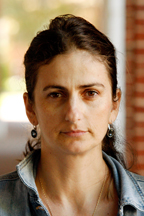
Mihaela Dobrescu received her Ph.D. in Wavelet Analysis under the supervision of Gestur Olasson at Louisiana State University in 2005. Previously a mathematics instructor at “L'Ecole Superieur Economique” in Bucharest, Romania, and after graduating from Louisiana State University, a visiting assistant professor in the Department of Mathematics at Furman University in South Carolina, currently she is an associate professor at Christopher Newport University, in Newport News, Virginia. Her research focuses on classical and harmonic analysis, and their applications. She is dedicated to promoting mathematics at different levels, working with talented high school students and teachers as the program director of the Annual Regional CNU Mathematics Contest, as well as involving undergraduate and graduate students in research projects that connect science and mathematics with civic engagement issues like pollution or health and obesity.
Bee Hives, Pennies, Needles, and Harmonic Analysis: Part I
Analysis problems in general, and harmonic analysis problems in particular can lead to purely geometric problems, while geometric questions are often tackled via analytic methods. In these two talks, we will investigate some older and newer problems, some closed, some still open, in geometrical analysis and their connections with analysis and harmonic analysis, and other braches of mathematics.
Some knowledge of multivariable calculus and geometrical intuition will be the main prerequisites for this talk.
March 18-19, 2013: Michael Orrison
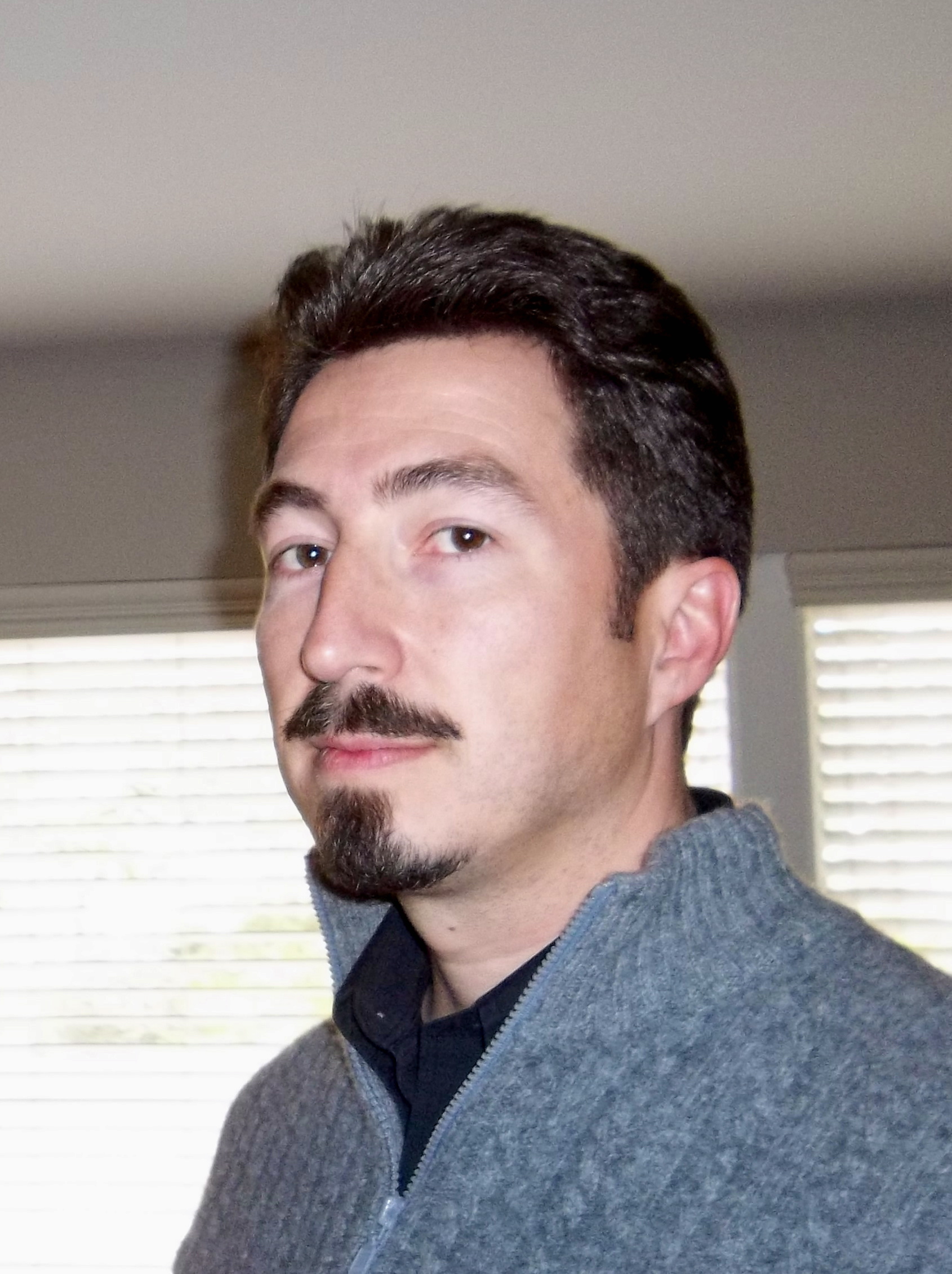
Michael Orrison is an Associate Professor of Mathematics at Harvey Mudd College. He received his A.B. from Wabash College in 1995, and his Ph.D. from Dartmouth College in 2001. His teaching interests include linear algebra, abstract algebra, discrete mathematics, and representation theory. His research interests include voting theory and harmonic analysis on finite groups. He particularly enjoys finding, exploring, and describing novel applications of the representation theory of finite groups with the help of his talented and energetic undergraduate research students.
Generalizing the Condorcet Criterion
The Condorcet Criterion is relatively straightforward: In an election, if there is a candidate who would beat every other candidate in a head-to-head race, then that candidate should be declared the winner. In this talk, I'll describe a natural family of generalizations of the Condorcet Criterion that led us to some unexpected questions and answers concerning forbidden "words of generalized Condorcet winners." This is joint work with Aaron Meyers, Jen Townsend, Sarah Wolff, and Angela Wu.
February 19-20, 2013: Bruce Richter
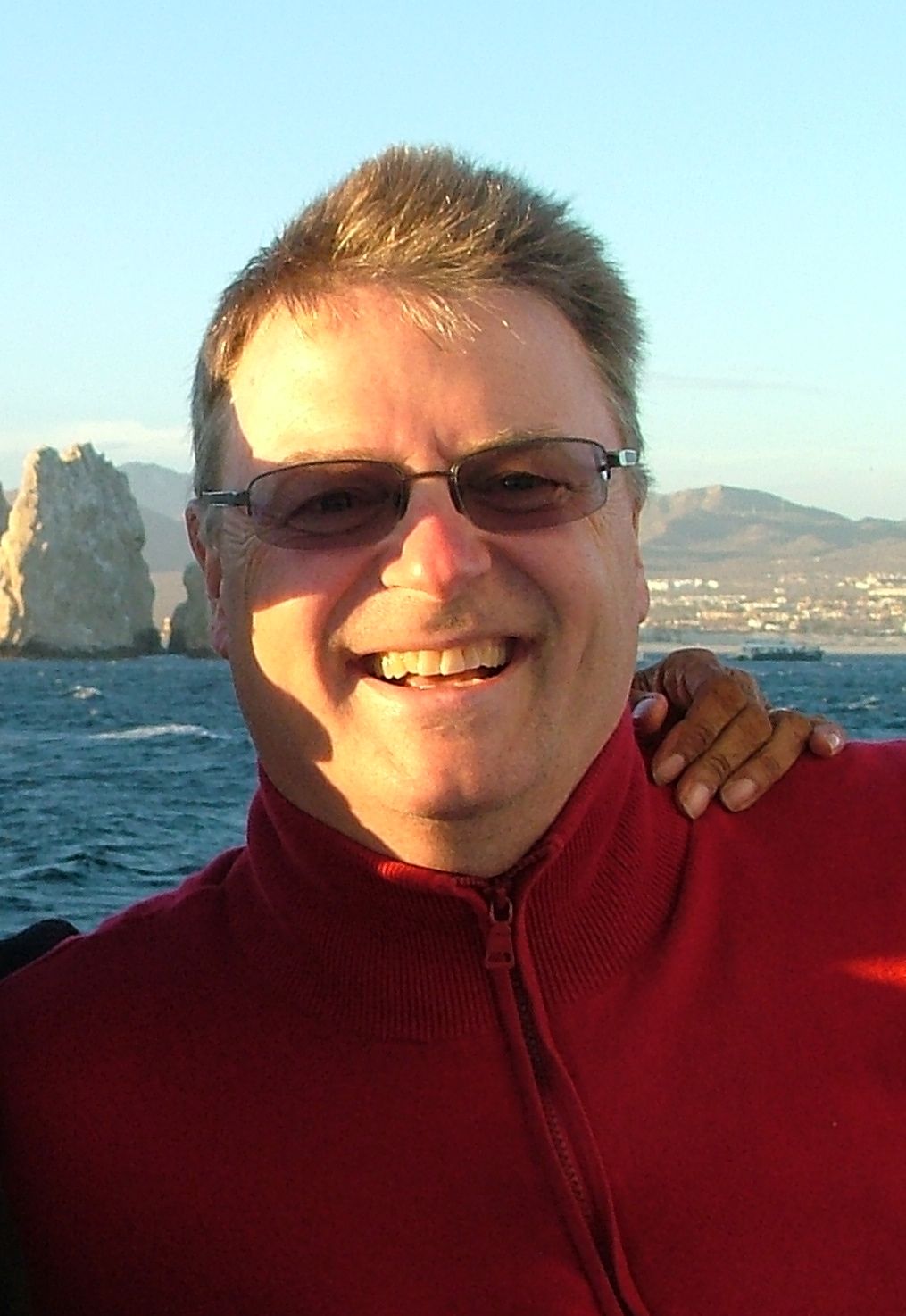
Embedding a Peano continuum in a surface
It has been known since the 1930's that a Peano continuum (that is, a connected, compact, metric space) embeds in the sphere if and only if it does not contain the finite graphs $K_{3,3}$ and $K_5$ and two other particular continua $T_1$ and $T_2$. The spaces $T_i$ are closely related to the "thumbtack space" consisting of a closed disc together with a line segment having one end at the centre of the disc, but otherwise disjoint from the disc. In this talk, we consider the same question for embedding a Peano continuum into a surface (that is, a connected, compact, 2-dimensional manifold).
The main result is that a Peano continuum $C$ embeds in a surface $\Sigma$ unless it contains one of:
- a finite graph that does not embed in $\Sigma$;
- a surface of smaller genus than $\Sigma$;
- the disjoint union of $\Sigma$ and a point; and
- the continua $T_1$ and $T_2$.
Sylvester's 4-point problem and straight line drawings of the complete graph $K_n$
In the 1880's, Sylvester raised the following question: if we pick $4$ points at random from the Euclidean plane, what is the probability that they make a convex quadrilateral? Equivalently, what is the probability that one point is inside the triangle formed by the other three? We will make this question more precise in the talk.
A problem in graph theory is to determine, over all sets of $n$ points in the plane, no three collinear, the smallest number $f(n)$ of crossings of the $n$ choose $2$ straight line segments joining all pairs of these $n$ points. It is easy to see that no crossings are required for $n\le4$, $f(5)=1$, $f(6)=3$, $f(7)=9$.
In a beautiful paper, Scheinerman and Wilf show that the answer to Sylvester's question is $\lim_{n\to\infty} f(n)/(n\ \text{choose}\ 4)$. This will be the main content of this talk.
November 19-20, 2012: Renzo Cavalieri
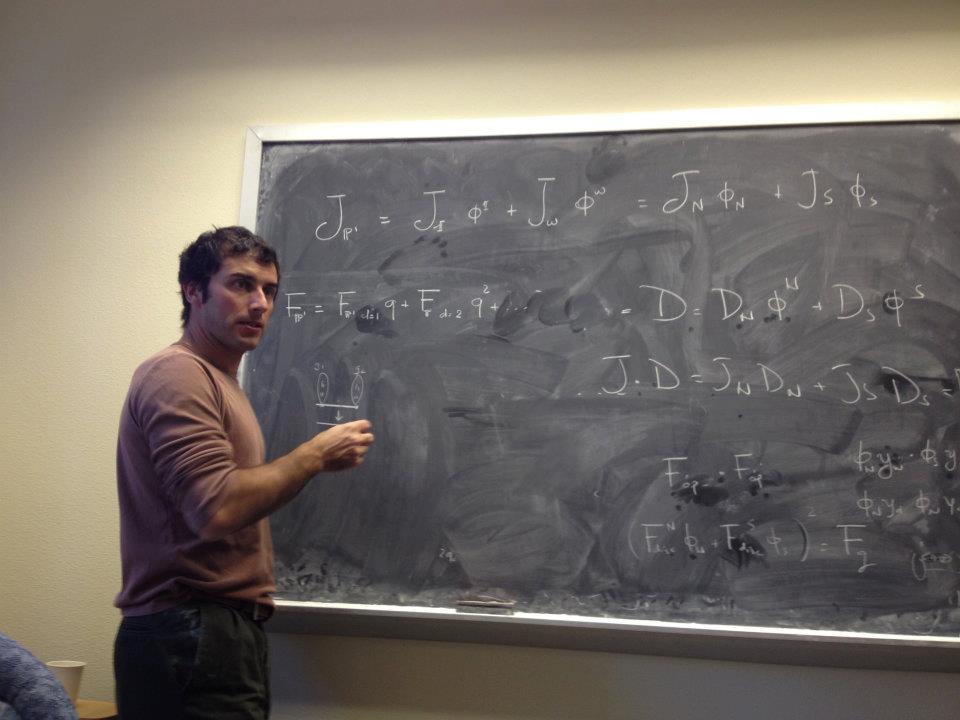
Renzo Cavalieri completed his Ph.D. in 2005 at the University of Utah under the supervision of Aaron Bertram. A winner of several teaching awards, he has focused on promoting mathematics, working extensively with MathCircle and REU programs and teaching mini courses around the world. Currently an Assistant Professor at Colorado State University, his study focuses on the connections between Gromov-Witten Theory, Hurwitz Theory and the moduli space of curves, especially using Topological Quantum Field Theories. There he has also helped organize the FRAGMENT Seminars and WAGS, two algebraic geometry seminar groups in Colorado and the Western US. Beyond his mathematical pursuits Dr. Cavalieri also studies the art of Capoeira.
Counting factorizations in the symmetric group using graphs
Given a permutation x in the symmetric group and an integer r, we want to investigate the following question: "How many ways can I write x as a product of r transpositions?"
This is a group theoretic question that can be answered in terms of representation theory of the symmetric group. In this talk I want to present a combinatorial approach, which provides the answer in terms of an appropriate weighted sum over certain decorated graphs which I suggestively call "tropical covers". The method comes from the study of an equivalent geometric question... but that is another story...
A tale of Hurwitz theory
Hurwitz theory studies covers of algebraic curves by algebraic curves. It has been used as a tool for the study of the geometry of the moduli space of curves, and has appeared in the construction of toy models in string theory. Because of the "multiple identities" of algebraic curves (they are geometric objects, but they also are purely algebraic objects if you identify a curve with its field of functions), Hurwitz theory is by nature interdisciplinary.
In this talk I would like to present some aspects of Hurwitz theory, specifically the study of simple and double Hurwitz numbers, the connections to the geometry of the moduli space of curves, and the remarkable combinatorial structure that these numbers have.
November 8-9, 2012: Debra Knisley
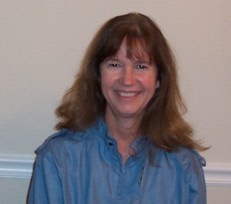
Debra Knisley received her Ph.D. in 1989 from Memphis State University. Her research is in the field of Computational Molecular Biology. Currently a full Professor of Mathematics and Director of the Institute for Quantitative Biology at East Tennessee State University, her recent research focuses on using machine learning and networks to model and understand biomolecular structures. Previously, she has been a visiting researcher at the Quillen College of Medicine and a New Directions Visiting Fellow at the Institute for Mathematics and its Applications at the University of Minnesota. She was recently elected to the Board of Directors for the MidSouth Computational Biology and Bioinformatics Society and has worked extensively with the SUMMA (Strengthening Underrepresented Minorities in Mathematical Achievement) program as well as mentoring graduate students within her school.
Graph-theoretic measures of biomolecular structures
In this talk I will present an overview of graph-theoretic models in molecular biology. We will see how graphs can be used to represent DNA structure, secondary RNA structure and protein structures. Techniques that attempt to numerically characterize biomolecular structure and function, using concepts from chemical graph theory, combinatorial graph theory and network science will be compared. Recent projects that utilize ideas from all of the above to model RNA and proteins will be presented as examples and the future of such applications will be a discussed. This is joint work with a number of students at ETSU, both undergraduate and beginning graduate.
Vertex-weighted graph models of protein structure
In this talk I will present several graph based models of proteins. Our previous work on predicting changes in protein binding affinity due to mutations shows that graphical invariants coupled with data mining tools inherently combine primary sequential information, structural information and amino acid motif recognition. Misfolded proteins are responsible for a number of diseases, among them cystic fibrosis. The misfolding of a critical protein, the Cystic Fibrosis Transmembrane Conductance Regulator (CFTR) membrane protein, is the result of a single point mutation in the gene that encodes CFTR. We extend our previous findings to model CFTR with a nested vertex-weighted graph approach, defining novel measures of graphs from combinatorial concepts which we use as biomolecular descriptors. Our model is then used to perform virtual mutations of CFTR in order to numerically characterize the consequences of each mutation on the structural features of the protein. We compare the results of eight of the most commonly occurring mutations of CFTR. This work is in progress and the findings are preliminary.
April 19-20, 2012: Benson Farb

Benson Farb received his Ph.D. in 1994 from Princeton University under the supervision of William Thurston. He was a Sloan Fellow and an NSF Career Award winner and currently serves as professor of mathematics at the University of Chicago where his research focuses on the interplay between geometry, topology, and group theory. He has coauthored the books "Noncommutative Algebra" and "A Primer on Mapping Class Groups" and edited "Problems on Mapping Class Groups and Related Topics" as well as "Geometry, Rigidity, and Group Actions." He participates in a program for training elementary school teachers called SESAME (Seminars for Elementary Specialists and Mathematics Educators) and has graduated 20 Ph.D. students, one of whom is LSU assistant professor Pallavi Dani.
Topology, Dynamics, and Geometry of Surfaces
Surfaces can be considered from many different viewpoints: their shape (i.e. topological structure), their geometry (e.g. curvature), and the behavior of fluid flows on them. In this talk I will describe three beautiful theorems, one for each of these aspects of surfaces. I will also try to explain the remarkable fact that these seemingly completely different perspectives are intimately related. This talk will be geared towards undergraduates, or indeed anyone with some knowledge of multivariable calculus (although even that is not essential).
The Mostow Rigidity Theorem: Topology vs Algebra vs Geometry
The Mostow Rigidity Theorem changed geometry and topology. This talk, aimed at graduate students, will attempt to explain how and why.
February 27-28, 2012: Kevin Knudson
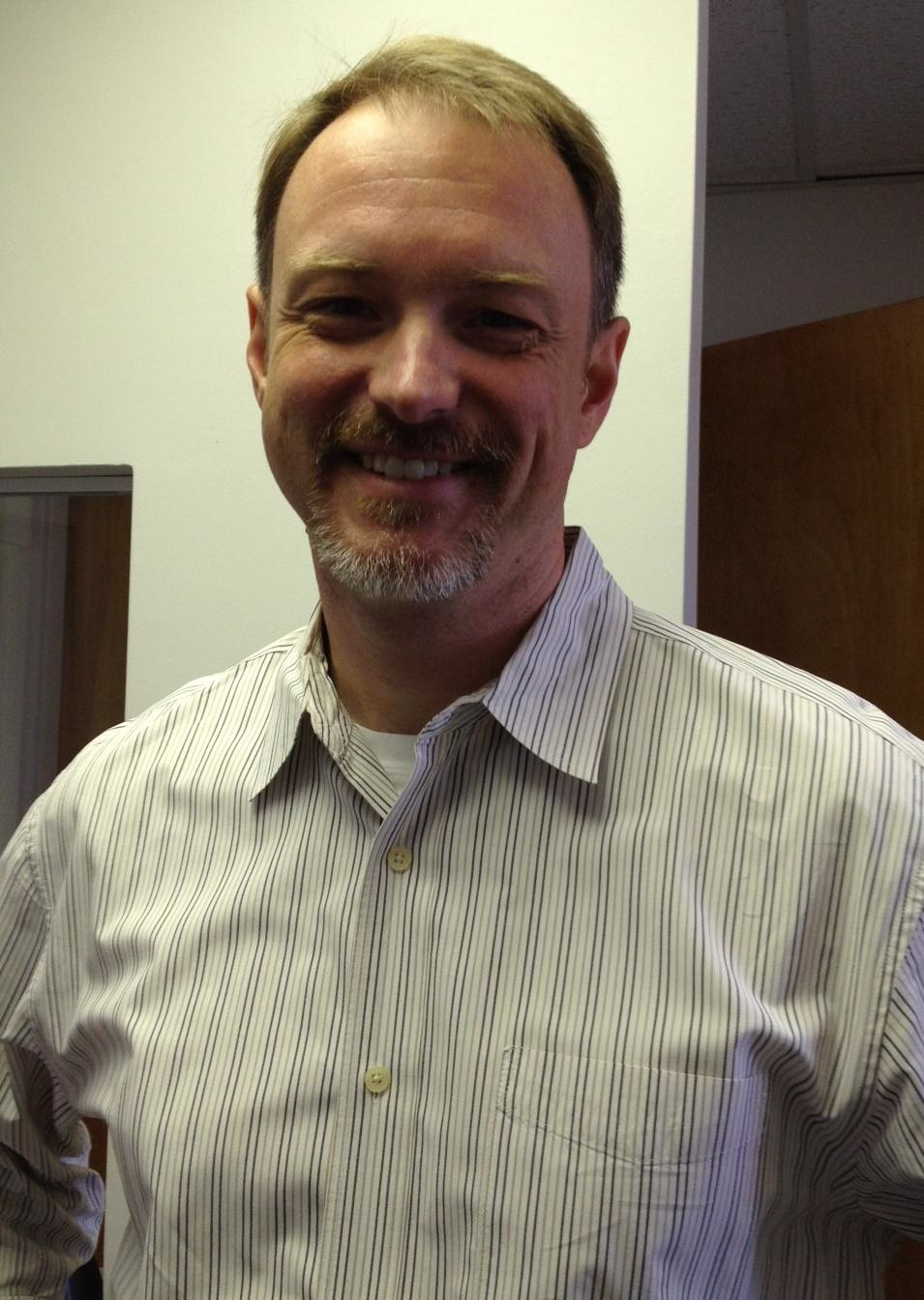
Earning his Ph.D. in Mathematics from Duke University in 1996, Professor Kevin Knudson serves as the current Director of the University of Florida Honors Program. After graduation, he became an NSF Postdoctoral Fellow at Northwestern University. Later, he spent time in a tenure-track position in the Department of Mathematics and Statistics and Mississippi State University. While there, he established the Honors Undergraduate Research Program and served as director of the Distinguished Scholars program. His original research area involved studying the homology of linear groups, focusing on the Friedlander-Milnor conjecture and establishing a link between this problem and algebraic cycles. Currently, his research interests include computational topology and discrete Morse theory. In his spare time, Prof. Knudson enjoys playing various stringed instruments (dulcimer, ukulele, mandolin), reading, and drinking coffee. Also in his spare time, he does not enjoy working out but views it as an essential defense against infirmity. As a St. Louis Cardinals fan, he had a particularly satisfying 2011 and is looking forward to Opening Day. He is married to book artist Ellen Knudson; they have one son.
Fujimoto Approximations
If I hand you a strip of paper and ask you to fold it in half, or fourths, or 128ths, you can do it very easily. But what if I ask you to fold it into fifths, or sevenths, or 31sts? In this talk I'll show you Fujimoto's approximation method for folding into nths, where n is any odd number. A surprising cast of mathematical characters will show up along the way - binary decimals, discrete dynamical systems, and primitive roots of unity modulo n.
Topological Data Analysis
In this talk I will introduce the concept of persistent homology, a method to use techniques from algebraic topology to find nonlinear structures in large data sets. Several examples will be discussed including the space of natural images (analysis due to Carlsson, et. al.) and data sets built from human speech signals (joint with K. Brown). No detailed knowledge of algebraic topology will be assumed.
November 9, 2011: Loredana Lanzani
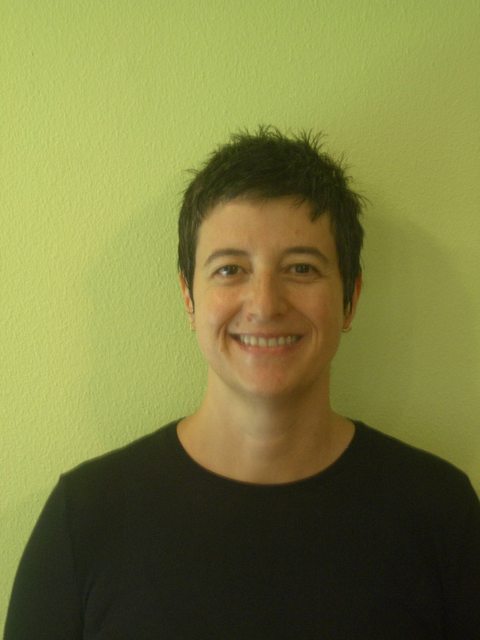
Professor Lanzani received her Ph.D. in mathematics in 1997 at Purdue University. She is currently a full professor in the Department of Mathematical Sciences at the University of Arkansas and is also a rotating program director in the Division of Mathematical Sciences at the National Science Foundation. She was a research fellow at I.N.d'A.M. in Italy and has held visiting positions around the world. Her research involves partial differential equations, complex analysis, and boundary value problems. She has mentored both graduate and undergraduate students and is the faculty adviser for the Arkansas Women in Statistics and Mathematics.
Practical Uses of Complex Analysis
In this talk I will quickly introduce the fundamental notion of conformal mapping for a planar (2-D) domain, which is one of the main ideas behind the classical subject of (one variable) complex analysis. I will then proceed to present some of the applications of conformal mappings to real-life situations, including: cartography; airplane wing design (transonic flow); taxonomy; art (in particular, the work of M. C. Escher). No previous knowledge of complex analysis is required.
Several Complex Variables: The Many Joys (and Occasional Pains) of Multivariable Complex Analysis
In this talk I will discuss some of the main ideas behind the (relatively recent) research area of Several Complex Variables, which in many ways is strikingly different from its one-variable counterpart -- that is the classical (and much older) subject of complex analysis. A Basic knowledge of multivariable calculus will be the main prerequisite for this talk.
October 4-5, 2011: Dan Cranston

A Proof of Bertrand's Postulate
Bertrand's Postulate states: For every positive integer n, there is some prime number p with n < p \le 2n. This result was conjectured in 1845 by Joseph Bertrand, who verified it for all n < 3 \times 10^6, and it was proved five years later by Chebyshev (nearly 50 years before the prime number theorem was proved). I'll present a beautiful proof of this result due to Paul Erdős.
The Search for Moore Graphs: Beauty is Rare
A Moore Graph is k-regular, has diameter 2, and has k^2+1 vertices- that's the most vertices you could hope for in such a graph. These graphs are vertex-transitive and evoke a wonderful sense that "everything fits just right." It's not hard to find Moore graphs when k is 2 or 3; they're the 5-cycle and the Petersen graph. But for larger k, they're very rare. In 1960, Hoffman and Singleton gave a beautiful proof that Moore Graphs can only exist when k is 2, 3, 7, or 57. For k equal to 2, 3, or 7, they showed that there exists a unique Moore Graph. When k is 57, nobody knows. I'll present Hoffman and Singleton's proof and take a wild stab at what they might have been thinking when they discovered it.
May 3, 2011: Suzanne Lenhart
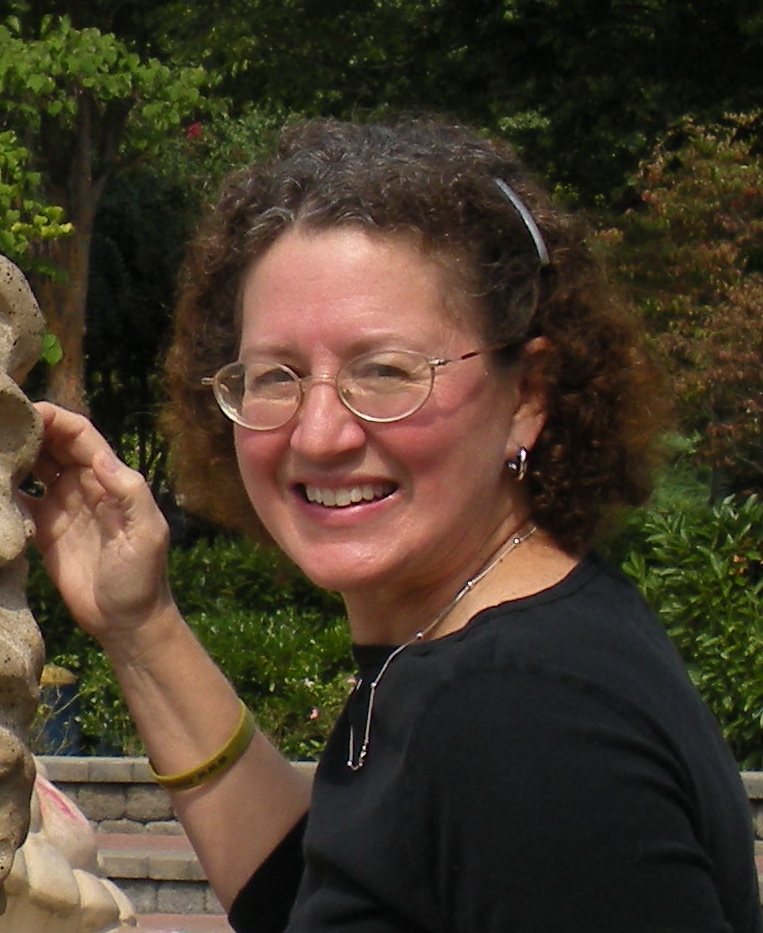
Suzanne Lenhart is a full professor in the Mathematics Department at the University of Tennessee. She was a part-time research staff member at Oak Ridge National Laboratory from 1987-2009. Her research involves partial differential equations, ordinary differential equations and optimal control of biological and physical models. She has a 2007 book, "Optimal Control Applied to Biological Models." She was the President of the Association for Women in Mathematics in 2001-2002. She was elected to the Board of Trustees of the Society for Industrial and Applied Mathematics in 2004 and again in 2007. She is the Associate Director for Education, Outreach and Diversity for the National Institute for Mathematical and Biological Synthesis. Lenhart was the director of the Research Experiences for Undergraduates summer program for the UT Math. Dept. from 1990-2005 and now directs such a program for the institute.
Optimal Harvesting in Fishery Models
We discuss two types of partial differential equation models of fishery harvesting problems. We consider steady state spatial models and diffusive spatial-temporal models. We characterize the distribution of harvest effort which maximizes the harvest yield, and in the steady state case, also minimizes the cost of the effort. We show numerical results to illustrate various cases. The results inform ongoing debate about the use of reserves (regions where fishing is not allowed), and are increasingly relevant as technology enables enforcement of spatially structured harvest constraints.
The power of optimal control: from confining rabies to improving CPR
Refreshments will be served in the Keisler Lounge from 1:00 to 1:30. This talk will present optimal control of two examples which are discrete in time. The first example involves difference equations that model cardiopulmonary resuscitation. The goal is to design an external chest and abdomen pressure pattern to improve the blood flow in the heart in standard CPR procedure. The second example is an epidemic model for rabies in raccoons on a spatial grid. The goal is to find the optimal distribution pattern for vaccine baits to slow the spread of the disease.
February 9, 2011: Andrei Zelevinsky
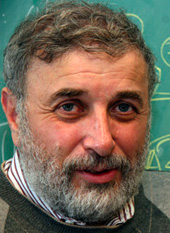
Andrei Zelevinsky is one of the leading mathematicians working in combinatorics and representation theory. He obtained his Ph.D. in 1978 from Moscow State University. He has held positions at the U.S.S.R. Academy of Sciences, Cornell University and Northeastern University. Professor Zelevinsky has authored over 100 research articles and has well over 2500 citations. He has written 2 monographs: "Discriminants, resultants, and multidimensional determinants" with I. M. Gelfand and M. Kapranov and "Representations of finite classical groups" both of which are very widely used. Professor Zelevinsky was an invited ICM speaker in 2004. He delivered invited AMS addresses, NSF/CBMS conference lectures, lectures at the 2009 Abel symposium and the 2006 London Math Society Regional Meeting, as well as many other prestigious lecture series. In 2002 Andrei Zelevinsky and Sergey Fomin introduced the class of cluster algebras and initiated their study. For a short time this turned into one of the most dynamic areas of mathematics.
Quiver representations and their mutations
A quiver is a finite directed graph, that is, a finite set of vertices some of which are joined by arrows. A quiver representation assigns a finite-dimensional vector space to each vertex, and a linear map between the corresponding spaces to each arrow. A fundamental role in the theory of quiver representations is played by Bernstein-Gelfand-Ponomarev reflection functors associated to every source or sink of a quiver. We discuss two recent modifications of these functors. The first (joint work with R. Marsh and M. Reineke) introduces decorated quiver representations and makes modified reflection functors act as isomorphisms of the corresponding Grothendieck groups. The second (joint work with H. Derksen and J. Weyman) extends reflection functors from sources and sinks to arbitrary vertices. This construction requires the quiver representations in question to satisfy relations of a special kind imposed by the framework of quivers with potentials. Motivations for this work come from several sources: superpotentials in physics, Calabi-Yau algebras and categories, cluster algebras. However no knowledge is assumed in any of these subjects.
December 1-2, 2010: Rodolfo Torres
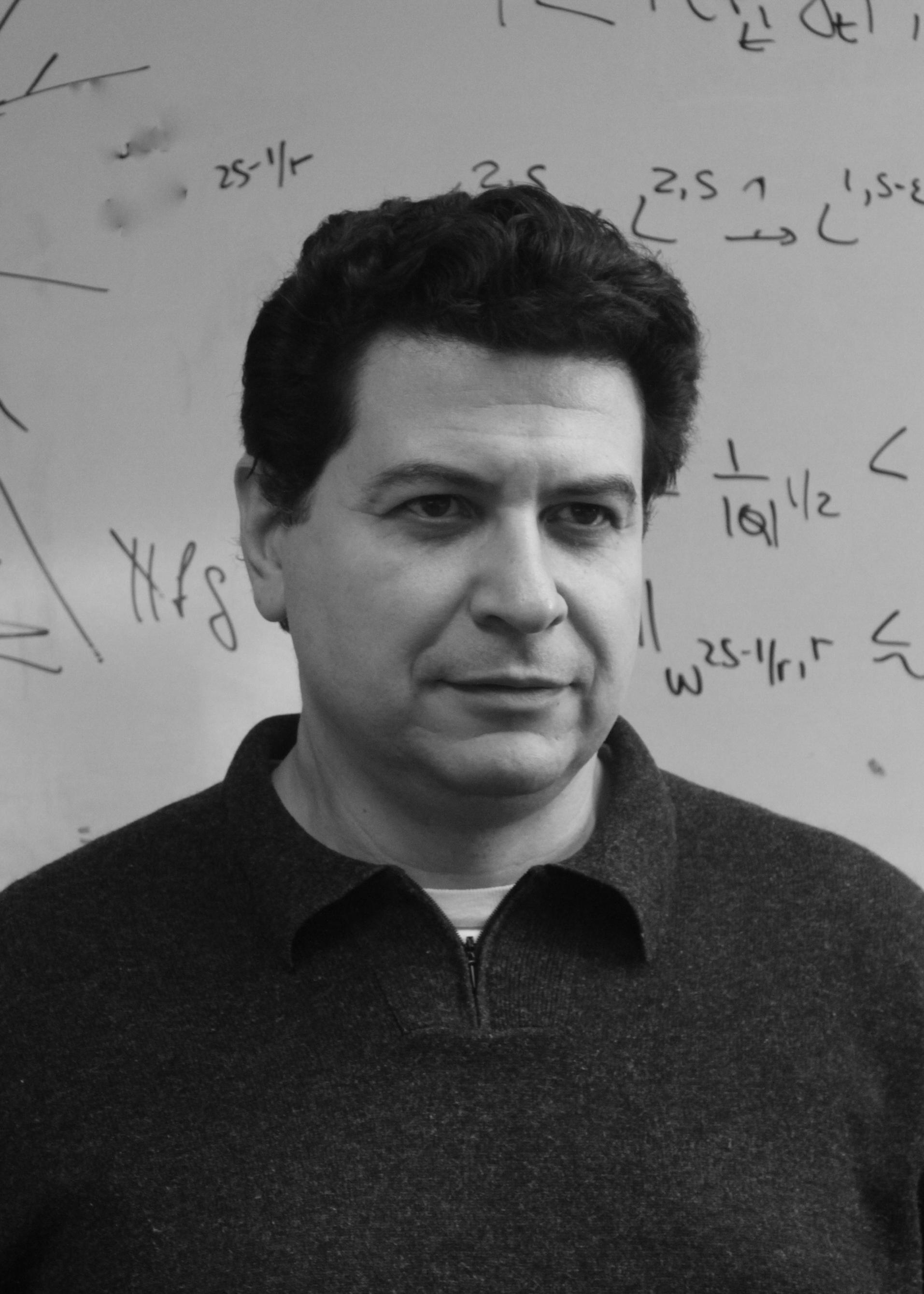
Professor Torres received his PhD in mathematics in 1989 from Washington University in St. Louis. He held then postdoctoral positions at the Courant Institute of New York University and the University of Michigan, Ann Arbor, before joining the University of Kansas, where he is presently a Professor. His research interests include Fourier analysis; applications in partial differential equations, signal analysis, and biology. He specializes in the study of singular integrals, function spaces, and decomposition techniques. Through his research collaborations in mathematics he has given numerous lectures around the world and his interdisciplinary work in biology has been covered in the media through articles in The New York Times and Discovery Channel on-line. He regularly mentors graduate and undergraduate students and has received various teaching awards for his efforts with students, including a Teaching Excellent Award from the T. Kemper Foundation.
Somewhere over the (mathematical) rainbow bluebirds fly...Why oh why are they blue?
There are blue skies and blue birds over the rainbow as the song says, but not all blues are the same. The blue and green colors we see in birds, and even some of the ultraviolet that we cannot see, are produced by the way in which the light interacts with ordered microscopic structures in the tissues of the birds.
This order in the structures can be measured using Fourier analysis, a powerful mathematical tool. Like a prism that decomposes a beam of light into a rainbow of colors, Fourier analysis transforms the geometrical arrangements observed in electron microscope images of the tissues into a mathematical rainbow of basic components that quantify order or periodicities. We will illustrate how Fourier analysis processes the images and helps decipher the colors of birds and other animals. The talk will be accessible to all those who are curious about some of the mathematics and physics behind the bright blue and green colors found in nature.
Discrete Decomposition Techniques in Fourier Analysis
Decomposition techniques such as atomic, molecular, wavelet and wave-packet expansions provide a multi-scale refinement of Fourier analysis and exploit a rather simple concept: "waves with very different frequencies are almost invisible to each other". Many of these useful techniques have been developed around the study of certain operators called singular integral operators.
By breaking an operator or splitting the function on which it acts into non-interacting pieces, these tools capture subtle cancellations and quantify properties of an operator in terms of norm estimates in functions spaces. This type of analysis has been extensively used to study linear or multilinear operators with tremendous success.
In this talk we will give some background and motivation for some decomposition techniques and show some basic concepts about how they are used to study operators of interest in Fourier analysis.
October 15, 2010: David Ross

David S. Ross took his PhD from NYU and his BA from Columbia, both in Mathematics. He has worked as an applied mathematician at Kodak Research Labs, where he worked on chemical and digital imaging systems, and at Kaiser Permanente, where he worked on the mathematical models of the human cardiovascular system. He is a professor of mathematics at the Rochester Institute of Technology. His current research interests include the statistics mechanics of protein mixtures, networking algorithms for MANETs (mobile ad hoc networks), and dynamical system models of bone remodeling.
Inferring Gibbs Free Energies from Light Scattering Data
Differences in free energies are the driving forces in chemical changes. The current project originated in our desire to understand phase changes in the protein mixtures in the lens of the human eye; such changes cause cataract disease. We are able to use a PDE to study the free energies as functions of the mixture composition, and we will formulate a well-posed problem for this equation with singular boundary conditions based on the Widom asymptotic form of the free energy.
ODEs in Industrial (and other) Applications
In this talk, we discuss several ODE problems from various areas of active research, such as MEMS (Micro-Electro Mechanical Systems) micro-energy harvesting, in which micro-machines built on computer chips glean energy from mechanical vibrations to power circuits, as well as topics in Osteoporosis research, Cataract research, Gear design and Ecological Economics.
March 22-23, 2010: Barry Cipra
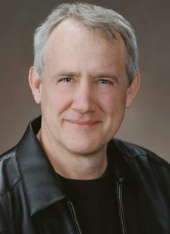
Barry Cipra is a freelance mathematics writer based in Northfield, Minnesota. He is a Contributing Correspondent for Science Magazine and writes regularly for SIAM News, the newsletter of the Society for Industrial and Applied Mathematics. He is the author of "Misteaks, and how to find them before the teacher does," published by AK Peters.
SeVenn, EleVenn, and Beyond
The speaker will report on recent results on the existence of rotationally symmetric Venn diagrams -- a problem first posed, by an undergraduate, in the 1960s, and finally fully solved, by another undergraduate, almost 40 years later. Many related open problems remain, perhaps for yet another undergraduate to solve.
Science Writing
Dr. Cipra will be addressing the Communicating Math class. Everyone is more than welcome to attend.
February 10-11, 2010: John Oprea
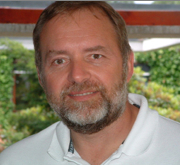
Dr. Oprea received his Ph.D. from Ohio State University and is currently a Professor at Cleveland State University. A great deal of Dr. Oprea's research has been conducted through long-term collaborations. As a result of this, he has traveled extensively and gained international recognition for his work in algebraic topology and symplectic topology. He is a recipient of the Mathematical Association of America's Lester R. Ford award for expository excellence and his book, The Mathematics of Soap Films, is published by the American Mathematical Society in its Student Mathematical Library series.
Mathematics and Soap Films
Why do one-celled creatures take the shapes they do? Why do red blood cells have their characteristic shape? More and more, in biology as well as other sciences, the notion of "shape" is becoming important. Mathematicians have ways of measuring shape and of determining shape through optimization. This fits well with Nature's penchant for economy, so it isn't surprising (in retrospect) that soap films, which arise from surface tension's ability to shrink surface area, are a kind of analog computer for the mathematics of minimizing surface area. This talk will consist of three parts: soap film demonstrations (which well set the stage for); a bit of mathematics and; computer experimentation and illustration. Since audience participation is required for soap film experiments, attendees are encouraged not to wear their best attire.
Variational Principles and Real-World Shapes: Balloons and Droplets in Space
When we look at Nature, we see shapes everywhere. In this talk, we will describe the shape of a Mylar balloon in terms of a variational principle and see how this can be understood in terms of the physical characteristics of balloons. (A Mylar balloon is often found at kids' birthday parties and is formed by taking two disks of Mylar, sewing them together along their boundaries and inflating.) This topic is a prime example of the interplay among physical principles, geometry, analysis and symbolic computation. We will also discuss the principles determining the shapes arising in water-bubble experiments aboard the International Space Station.
November 3-6, 2009: Charles Conley
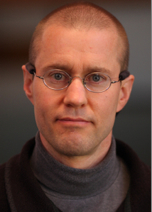
Dr. Conley received his Ph.D. from the University of California at Los Angeles and is currently an Associate Professor at the University of North Texas where he conducts research on two types of complex Lie algebras: finite dimensional simple Lie algebras, and infinite dimensional Lie algebras of vector fields such as the Virasoro Lie algebra.
f(x) = x^(x^(x^...)...)
For what real numbers does this function make sense? This question was first answered by Euler. Clearly f(2) is infinite, and one might guess that f(x) is infinite for all x greater than 1. In fact this is not true: both upper and lower bounds of f's domain of definition are interesting. In this talk we will deduce these bounds using nothing more advanced than the chain rule. En route we will examine some well-known graphs (y = a^x) and some not-so-well-known graphs (y = a^(x^x)) closely, discovering some enjoyable surprises.
Vector Fields on the Line
This talk will be a gentle introduction to some aspects of the theory of representations of Lie algebras by means of an example: the Lie algebra Vec(R) of vector fields on the line. Since the objects involved are quite concrete, no prior knowledge of Lie algebras will be assumed: only basic calculus and linear algebra.
October 21-23, 2009: Virginia Naibo
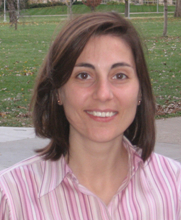
Dr. Naibo is currently an Assistant Professor in the Department of Mathematics at Kansas State University, where she conducts research in the area of Fourier Analysis. She received her Ph.D. in mathematics in 2002 from Universidad Nacional del Litoral, Argentina. She has held visiting positions in Universidad del Pais Vasco, Spain, the University of Kansas, and a tenure-track position at Rose-Hulman Institute of Technology, Indiana.
Decay Properties of Wave Functions Associated to Atomic Particles
Mathematical models describing the motion of an object falling in the atmosphere or the vibration of an elastic string can be obtained using Newton's second law of motion. This law fails at the level of atoms and their constituents and it is quantum mechanics that provides a new set of laws and a mode of description for microscopic systems. The counterpart of Newton's second law in the microscopic world is the Schrodinger equation. We will go over simple models of this equation and discuss the idea of dispersive estimates for their solutions.
Cool Applications of Matrix Theory
We will discuss the mathematics behind digital image compression models such as JPEG and website ranking algorithms such as Google's PageRank.
April 20, 2009: Carlos Castillo-Chavez
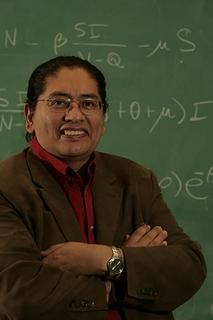
Dr. Castillo-Chavez holds a Ph.D. from the University of Wisconsin and teaches at Arizona State University where he conducts research on mathematical epidemiology. In this field, Dr. Castillo-Chavez and collaborators have coauthored over 175 publications on HIV, influenza, childhood diseases, STDs, and addiction. For his efforts, Dr. Castillo-Chavez has received two White House Awards (1992 and 1997), the Richard Tapia Award (2003), and has been elected a fellow of the American Association for the Advancement of Science.
Opportunities in the Mathematical Sciences
A recent article in the Wall Street Journal reported that the best career is that of a mathematician. Why is this so? Why is the training in mathematics so critical? And what do we mean by mathematical training? In this lecture, I will provide some personal responses to the above questions and show the advantages of redirecting mathematics training from what I have learned in the context of undergraduate and graduate research.
Mathematical Epidemiology
We hear almost daily about the dangers of potential bird "flu" epidemics, the risk of catching deadly diseases in hospitals, or the level of preparedness that out country has as it plans its responses to the dangers posed by the deliberate releases of biological agents. We also hear about new medical advances that include the development of new vaccines including the rotavirus vaccine as well as the continuous search for ways of fighting HIV.
In this lecture, I will discuss the role that modeling and the mathematical sciences have played in the study of the dynamics and control of infectious diseases. I will briefly review the history of mathematical and theoretical epidemiology which goes back to the time of the Bernoulli family and highlight some current applications in the context of specific diseases. This lecture should be of interest to mathematicians interested in applications as well as to biologists and social scientists interested in the development and testing of intervention strategies.
March 18-19, 2009: Mark Sepanski
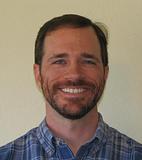
Dr. Sepanski holds a Ph.D. from M.I.T. (where his advisor was B. Kostant) as well as a B.S. from Purdue University. While teaching at Baylor, Dr. Sepanski pursues research in Lie theory and, in particular, in representation theory of real reductive Lie groups. He has written a number of papers on the topic as well as a book, Compact Lie Groups, which was published by Springer-Verlag in 2006.
Just Can't Stop Counting
We all begin our mathematical life by studying the integers. And While the integers are pretty cool, you can only multiply so many seven digit numbers before you call it quits and move on to the rational numbers. After that, you hit the real numbers and eventually move on to the complex numbers. But what comes next--if anything? In this talk we'll give one version of the answer to this question.
Why Torture Us With Proofs?
In this discussion, we'll look at a number of obviously true patterns and theorems. Unfortunately, some of these obvious results turn out to be quite false! As a result, we'll see why mathematicians blab so incessantly about proofs.
January 21-23, 2009: Thomas Struppeck
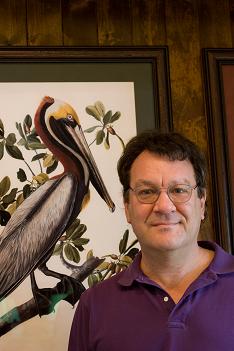
Thomas Struppeck is President of the Casualty Actuarial Society, which is one of the two main professional actuarial societies in the US. He is also President of Longhorn Analytics, a consulting actuarial firm. Dr. Struppeck received his Ph.D. in Mathematics from the University of Texas at Austin under the direction of Jeffrey Vaaler. He was a postdoc at Rutgers University before leaving number theory and going into actuarial science. Prior to becoming the President of Longhorn Analytics, Dr. Struppeck held positions as Vice President of Centre Insurance Company and as Director and Head of Actuarial Studies at CIFG Assurance North America, Inc. Dr. Struppeck has also served as a member or chair on exam creation and pass mark decision committees for actuarial SOA/CAS exams.
Career Opportunities for Mathematicians in Insurance and Finance
What opportunities in the finance arena are there today for mathematics majors? Has the collapse of the mortgage market (and several large hedge funds) reduced the demand for “quants”? Where could graduating undergraduate mathematics majors look for jobs? How about graduate students?
This talk will try and shed some light on these and related questions. A good way to break into these fields is through the actuarial exams. Of course, the actuarial exams can also lead to a career as a traditional actuary in addition to opening doors into related fields.
There will be time for questions at the end of the talk.
The Mathematics of the Sub-Prime Meltdown
Asset Backed Securities: Collateralized Debt Obligations
Or
How to take some bad loans, assemble them into a pile, and almost bring down the world’s financial system.
Years ago banks sought out deposits and then lent the money out to homebuyers. More recently, banks found that they made most of their money at the time that the loan was made, so they changed how they did business. They started selling their loans to investors shortly after making them. This gave the banks their money back immediately so they could quickly lend money to another homebuyer.
This was a good thing, because it increased the number of loans being made to homebuyers. It also greatly increased the supply of loans for investors. Wall Street bankers found ways to package these loans so that they could be sold to investors. In this talk we will look at some of the mathematics behind how these packages work (and how they didn’t work).
No knowledge of finance or financial mathematics will be assumed.
| Attachment | Size |
|---|---|
| tobasco.jpeg | 5.36 KB |